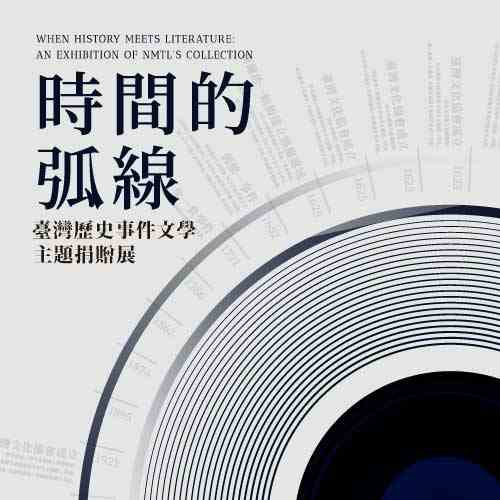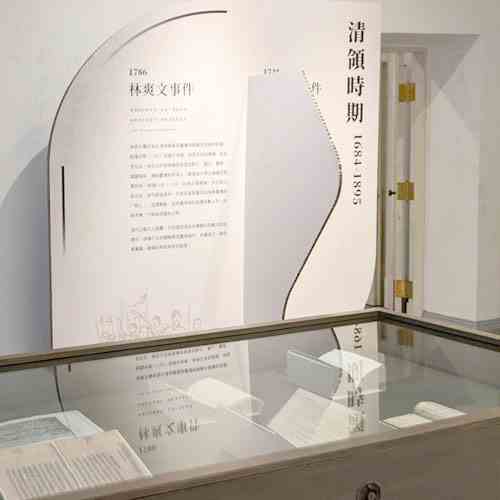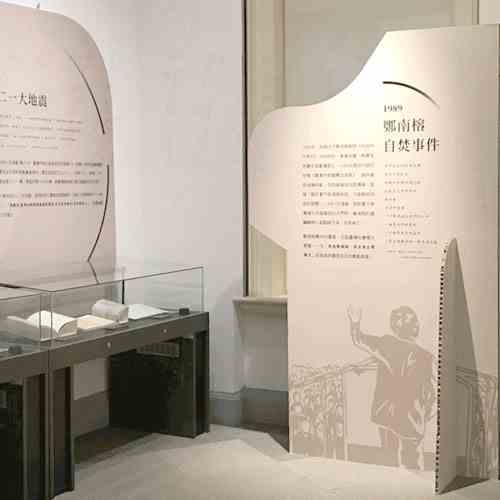Japanese invasion, cession of Taiwan►Tapani Incident►The Taiwan Cultural Association
The Taiwan People's Party►Musha Incident►Central Taiwan Earthquake►The Kōminka Movement
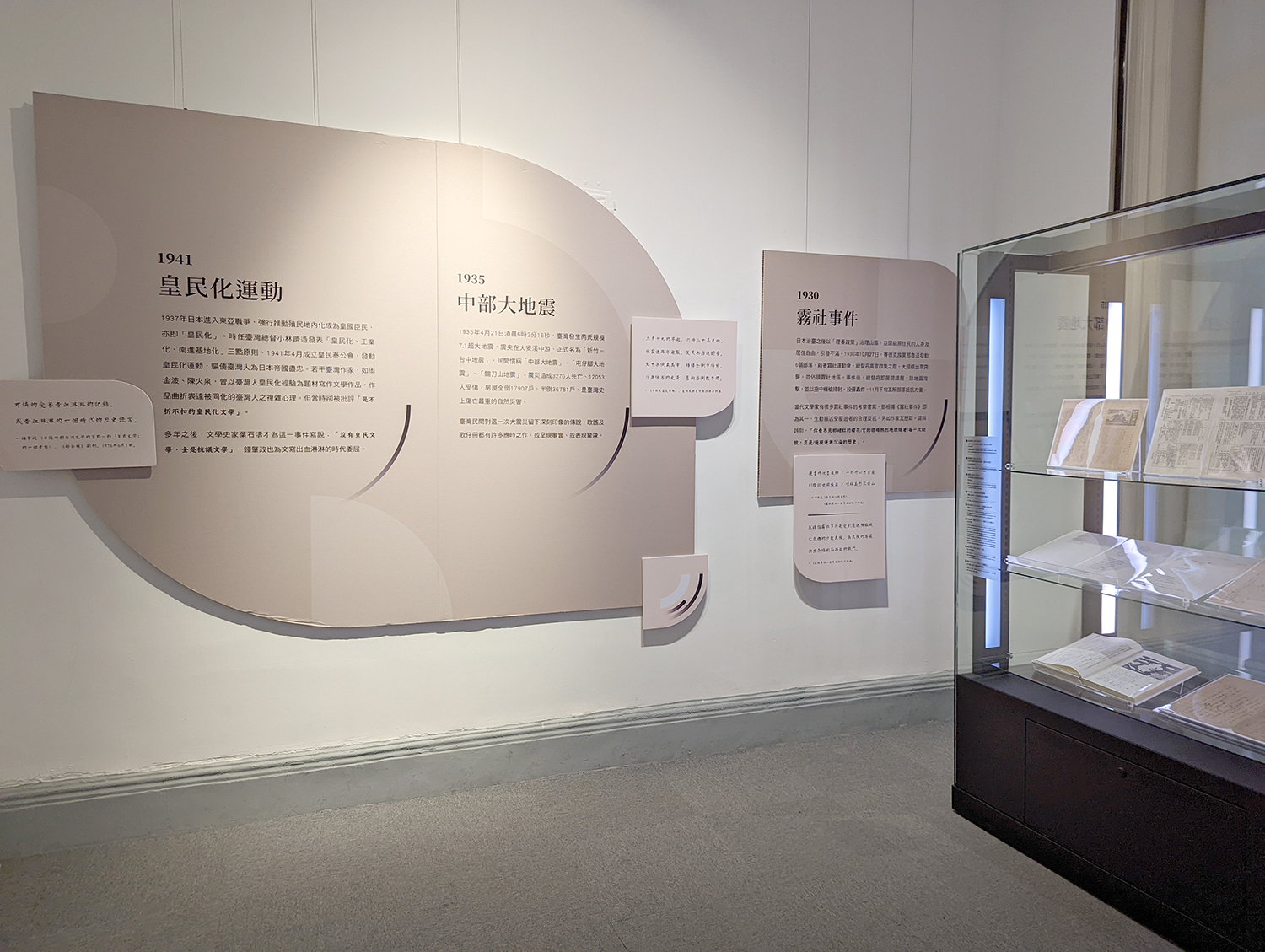
⭓ 1895, Japanese invasion, cession of Taiwan, Republic of Formosa
In 1894, a war broke out between the Qing dynasty and Japan over the issues on Korea. In March 1895, Qing sent Li Hung-chang, a Beiyang Minister, to Shimonoseki, Japan, to negotiate and reach an agreement regarding the secession of Taiwan. Taiwanese officials and citizens were terrified, with some Taiwanese gentry resisting strongly. Tang Ching-sung, the Governor of Taiwan, issued a declaration of "Independence" on May 23rd, and established the "Republic of Formosa" as a resistance against Japan on May 25th. However, it collapsed within a few months.
The lyrics from the folklore TAIWAN PROVINCE'S SONG OF DEMOCRACY tell about this part in history, "A notice was issued in the city in April, and the people handed the Republic's seal to Tang Ching-sung; the three characters of the Republic of Formosa were etched on it. The people all over the land raised their flags up on hilltops to show their support." Lin Tsu-chin, a scholar in the late Qing dynasty, also wrote a poem when he realized that the aspiration for independence was doomed.
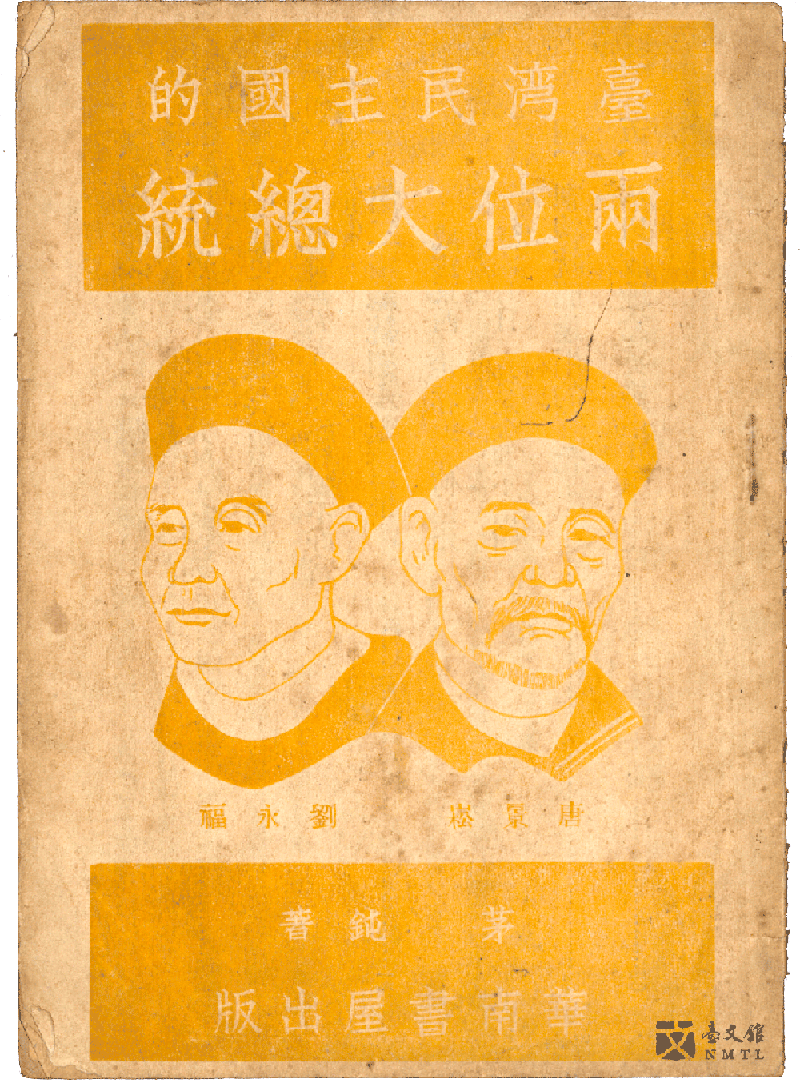
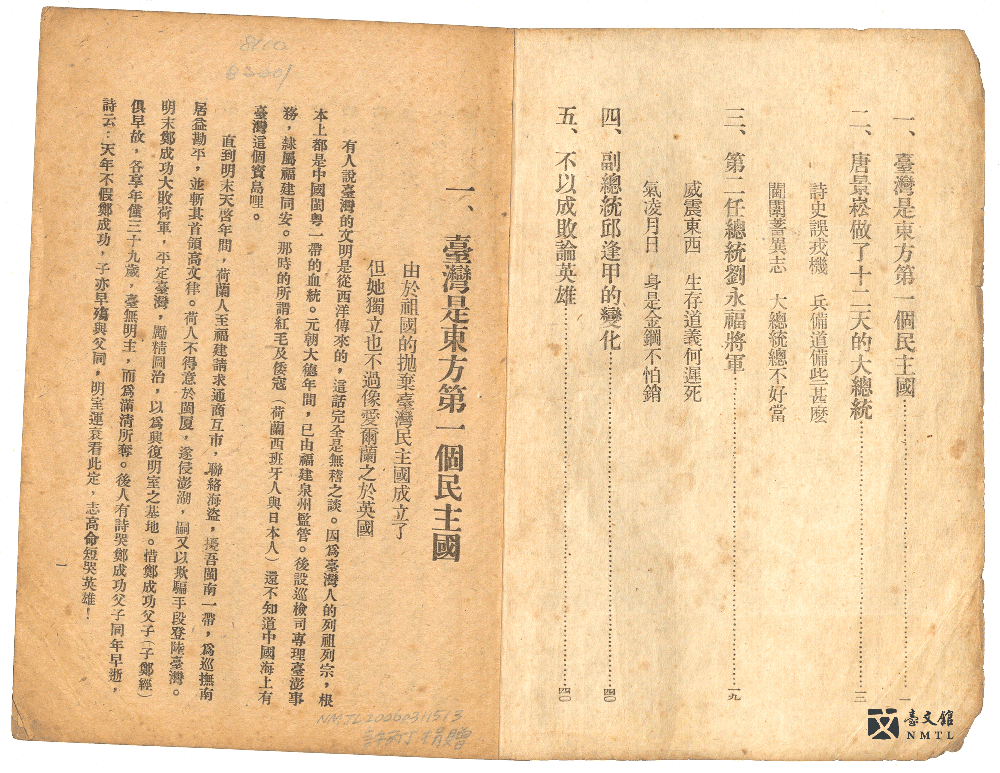
⌛Mao Tun, THE REPUBLIC OF FORMOSA AND ITS TWO PRESIDENTS|Hong Kong Wah Nam Publishing House, 1949. This book portrays the roles of the two presidents of the Republic of Formosa: Tang Ching-sung and Liu Yong-fu, during the 150-day short-lived republic. The article praised Liu Yong-fu as a loyal minister and a righteous man, who was also very kind, full of wisdom, strategic, brave and combative, while Tang was a failing character who made little contribution.(Donated by Hsu Ping-ting)
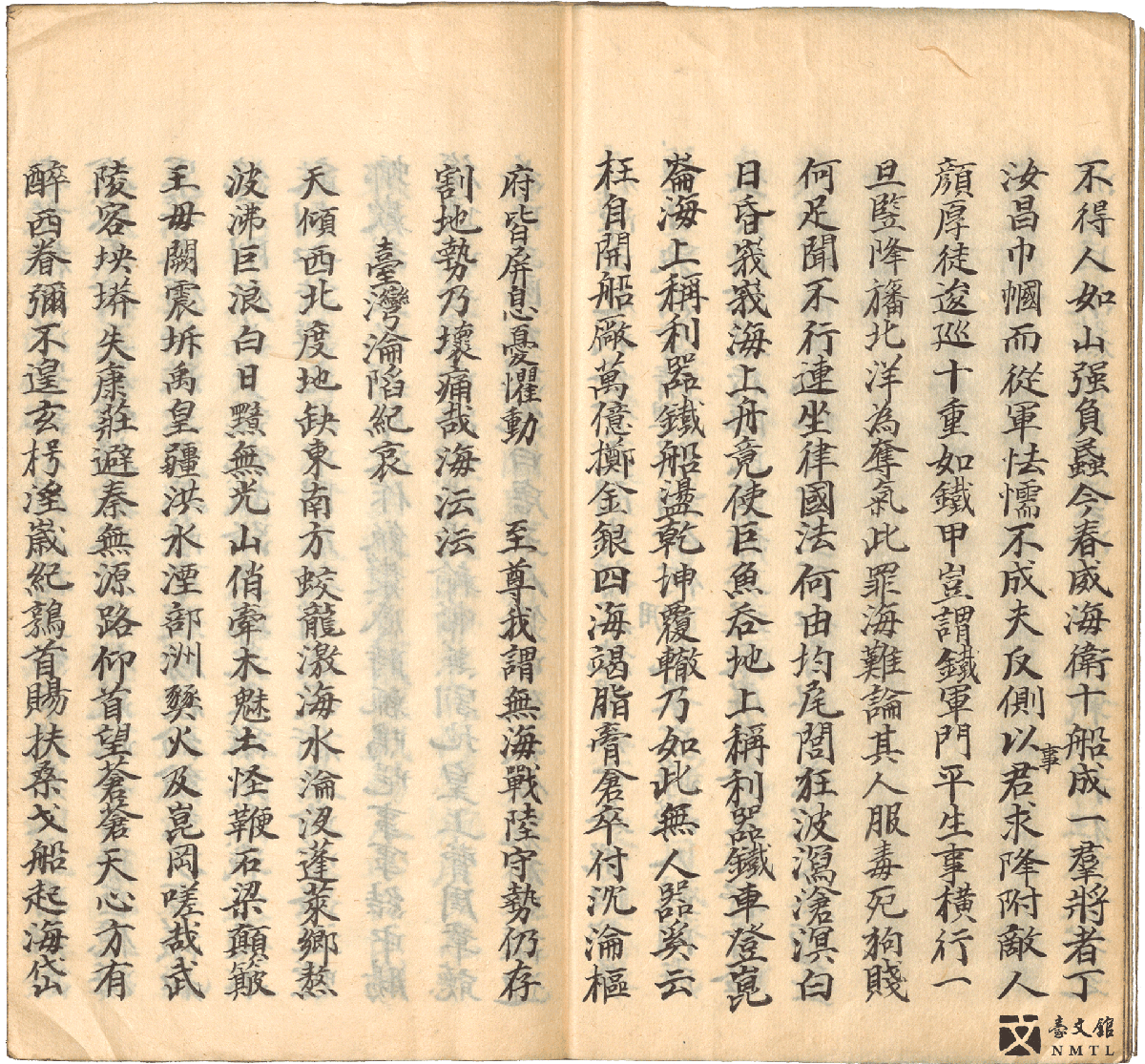
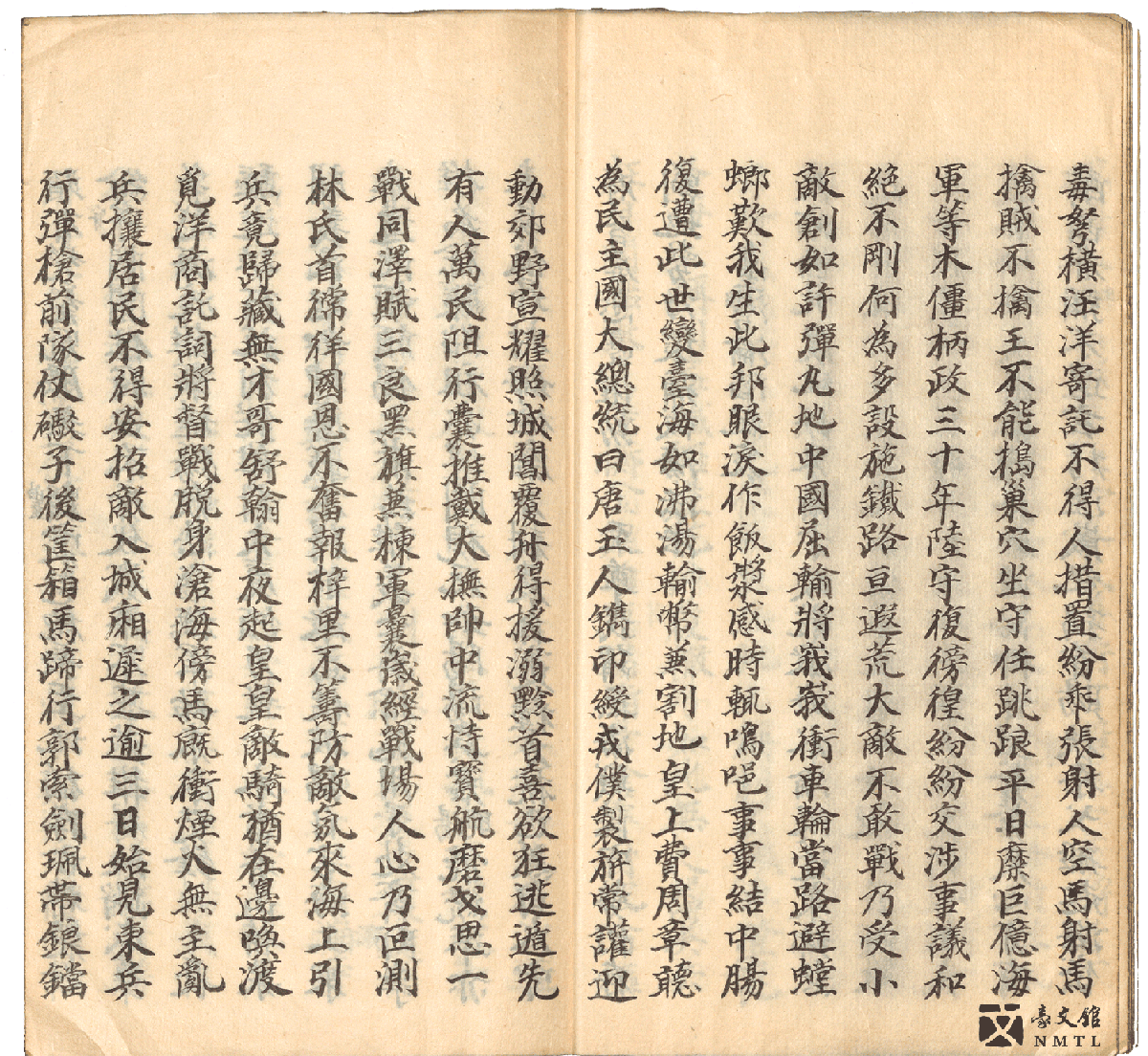
⌛Hung Chi-sheng (1866-1928), "Mourning for the Occupation of Taiwan," in manuscript, THE LAST WORDS OF MR. HUNG CHI-SHENG 2|This poem has a detailed description of Taiwanese's resistance to Japanese invasion, as an outlet for the grief and anger over Japanese colonial rule of Taiwan.(Donated by Hung Hsiao-ju)
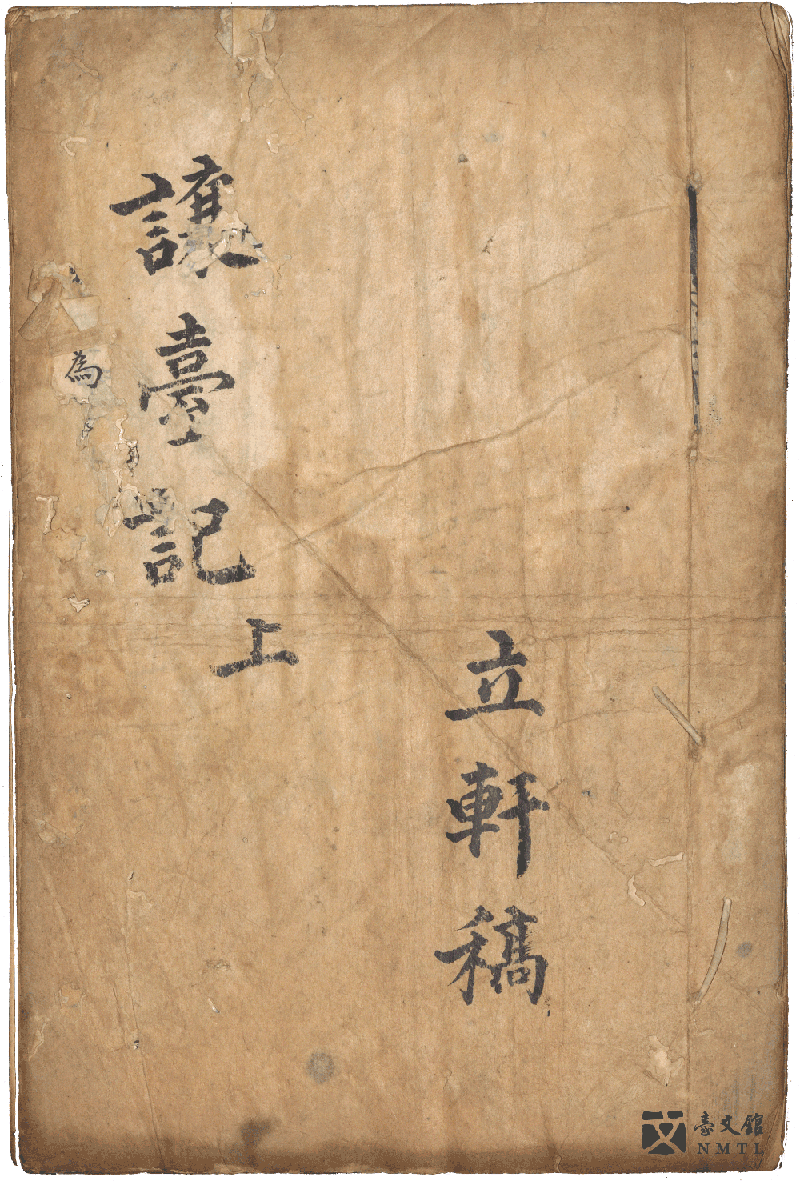
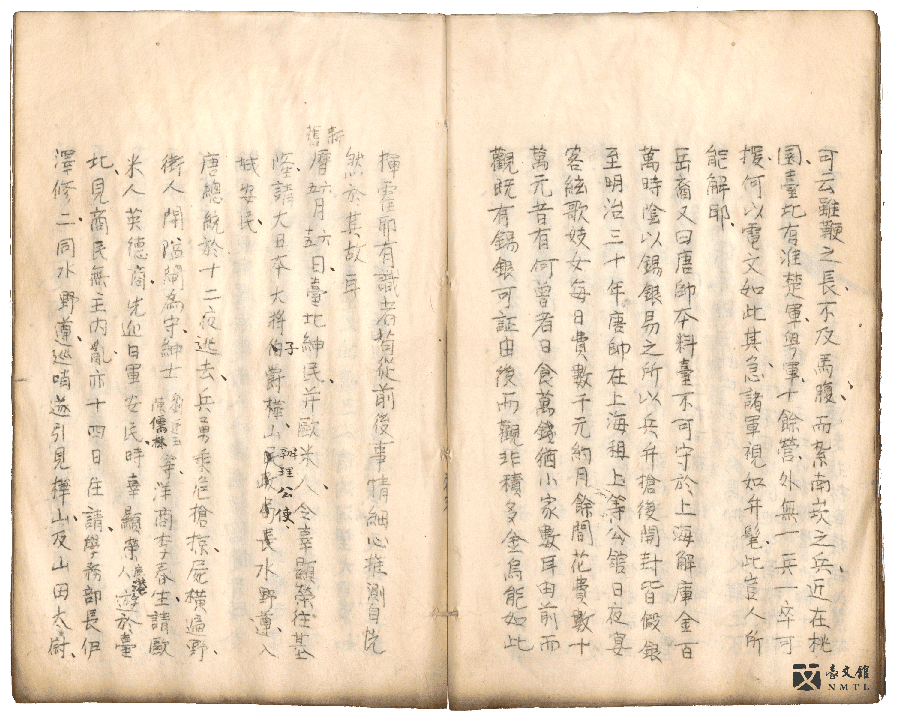
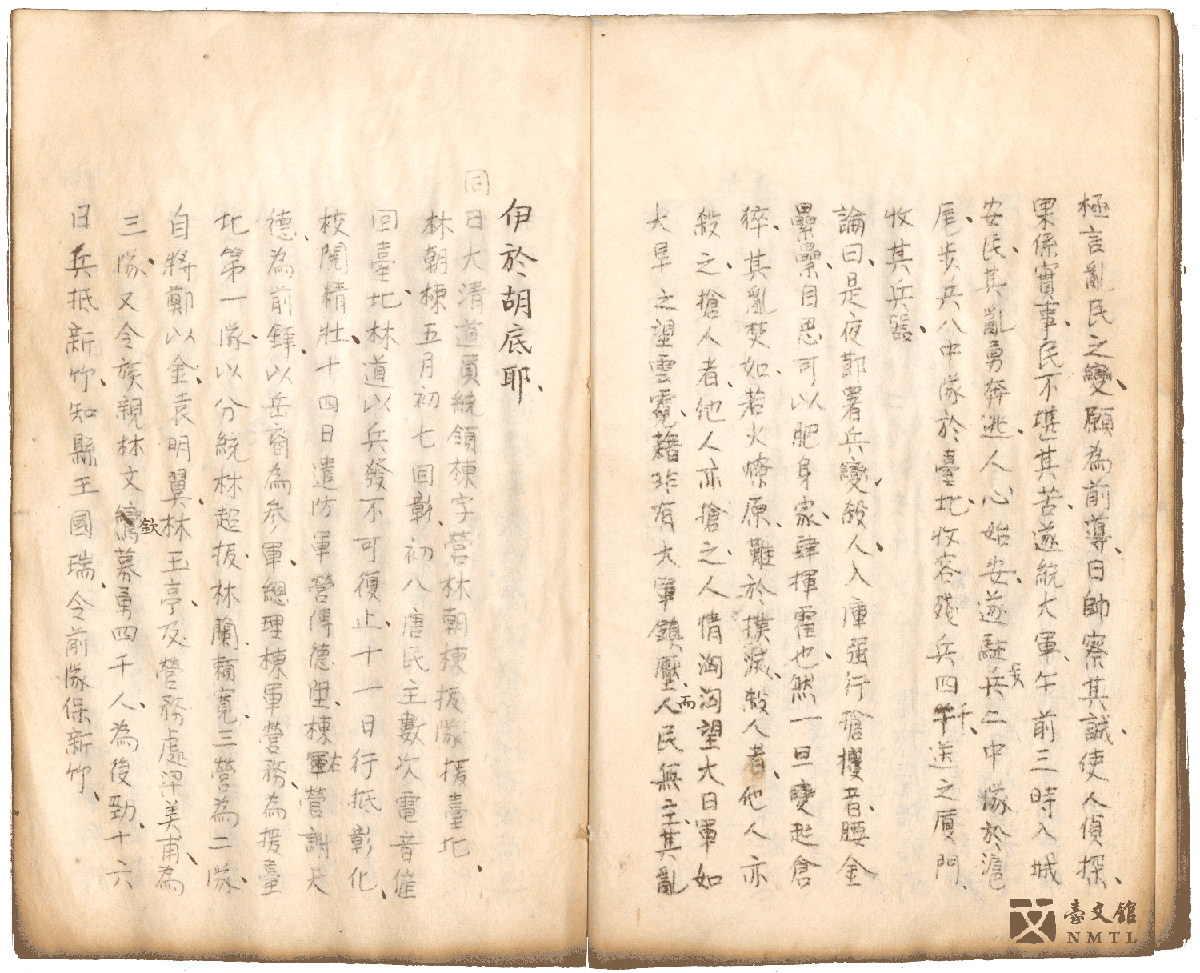
⌛Wu Te-kung (1850-1924), THE CESSION OF TAIWAN|The article describes how Taiwan was ceded to Japan by the Manchurian Qing administration.(Donated by the Green Taiwan Cultural and Educational Foundation)
◟◠◡◠◡◠◡◠◡◠◡◠◞
⭓ 1915, Tapani Incident
The biggest anti-Japanese armed uprising during the Japanese Colonial Era happened in Tapani (now Yujing) in 1915. The leader was Yu Ching-fang, who conceived the concept of "The Great Compassionate Kingdom of the Ming dynasty"; he claimed to be able to expel the Japanese and reduce taxes, offering hefty rewards to attract participants for the revolt, attacking the Japanese police stationed in Jiaxianbu, Alikwan and other places, and occupying Hutoushan. Thereafter, the Taiwan Governor's Office sent troops into the mountains to encircle and suppress the revolt. On August 22nd, the leader of the uprising was arrested, and the incident ended.
The lyrics of the folk song "The Resolution Battle in Tapani" offers appreciation to these Taiwanese heroes: "I don't want to be enslaved by the Japan regime; the warriors will righteously rise up and fight." When Yang Kuei was 10 years old, he witnessed the Japanese cannons passing by his home and came to sympathize with the anti-Japanese martyrs who were being viewed as gangsters, keeping in his heart a desire to rebel against the Japanese in his later life
✢ ✢ ✢
🎬 Suyaka Chiu, A TALE OF TAIWAN HEROES: A DECISIVE FIGHT IN TAPANI|Using the Tapani Incident as the subject, there are a total of 10 glove puppetry scenes. A recorded performance was given by the Yiming Wang Glove Puppetry.(Published by the National Museum of Taiwan Literature)
✢ ✢ ✢
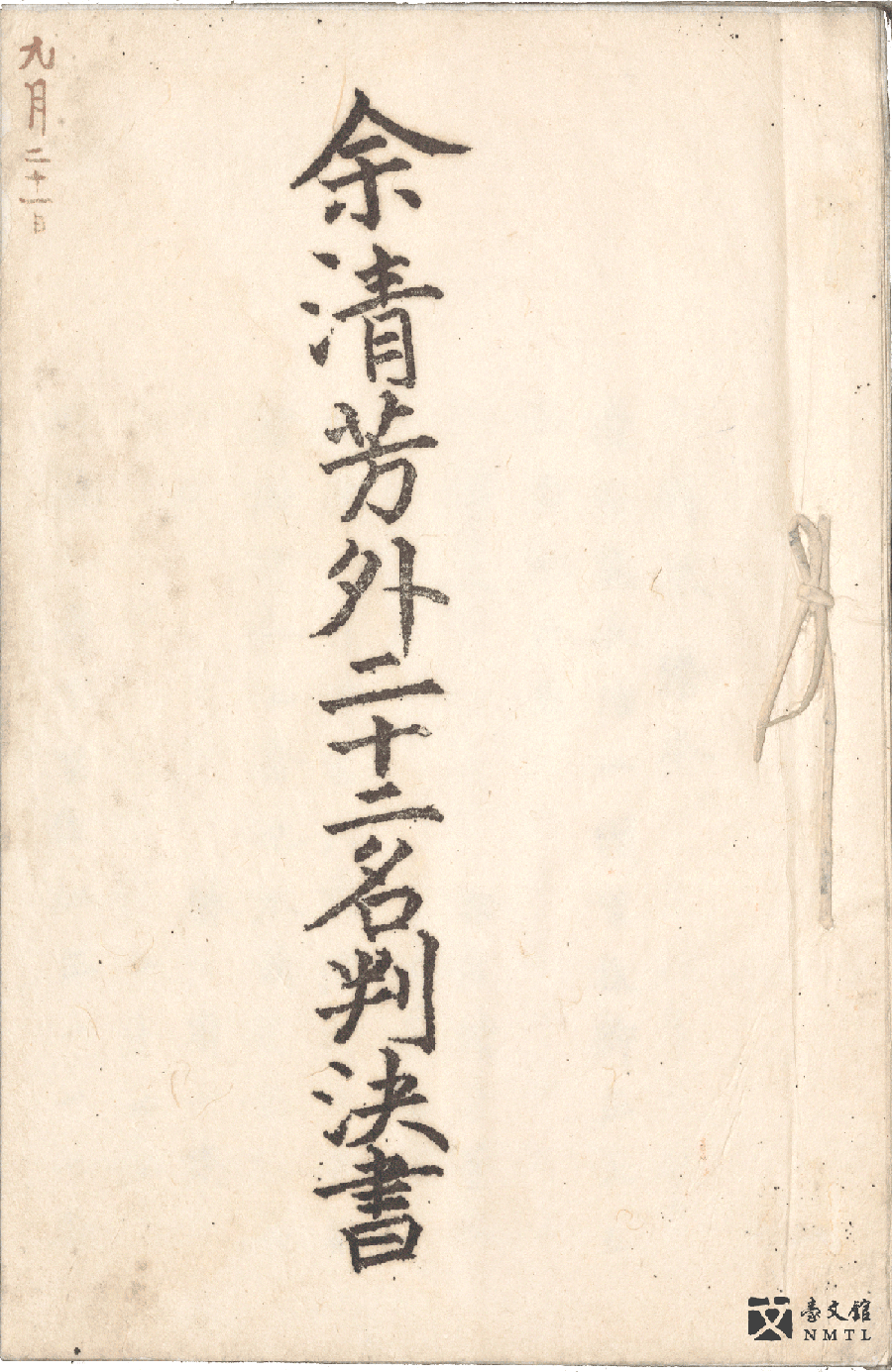
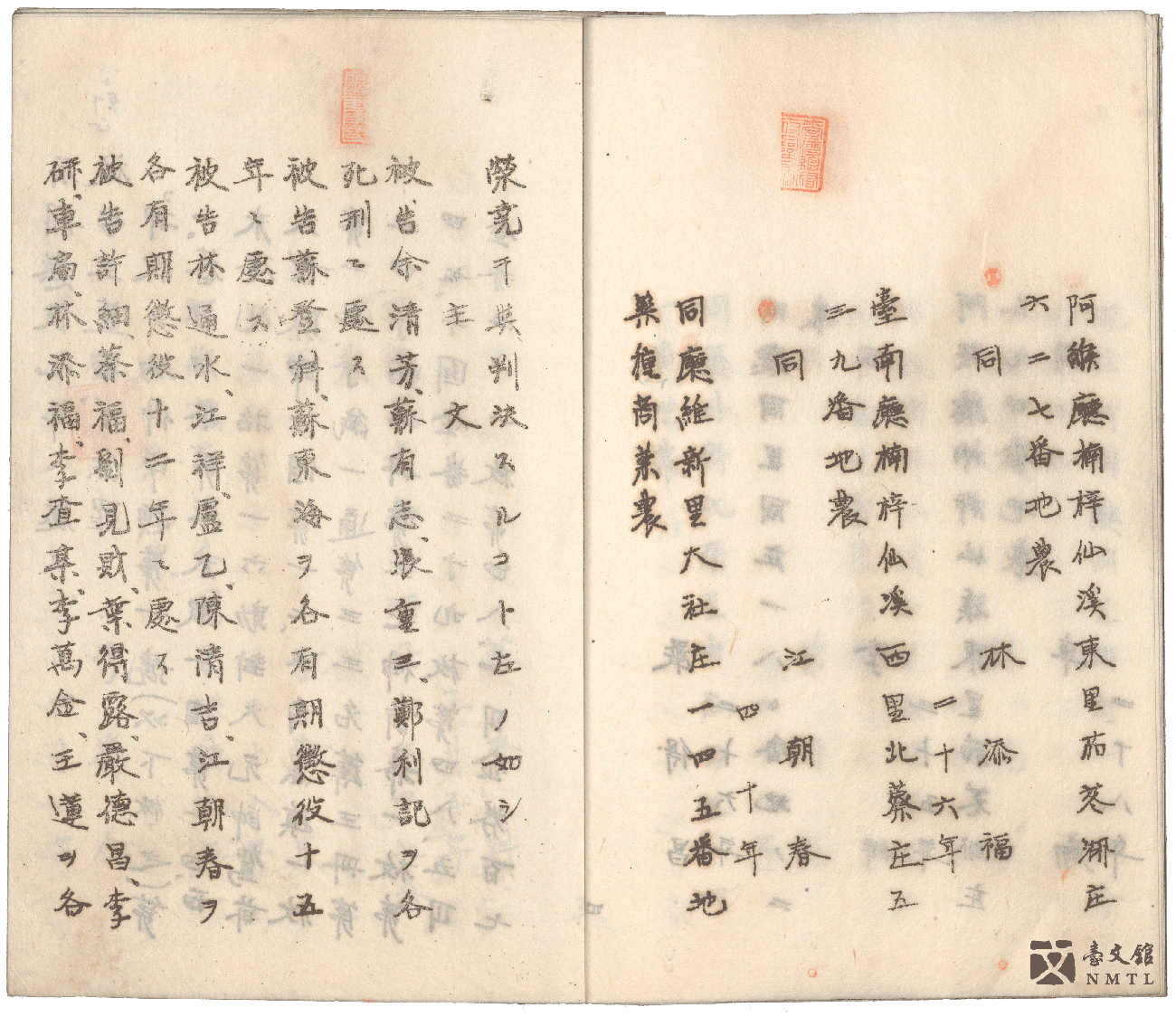
⌛Tomizo Takada, THE VERDICT FOR 22 UPRISERS OTHER THAN YU CHING-FANG|1915. This is an account of the Tapani Incident, with a record of the verdicts of Yu Ching-fang, the leader, and other uprisers such as Su Yu-chih, Chang Chung-san, Cheng Li-chi, etc.(Donated by Hsieh Pi-lien)
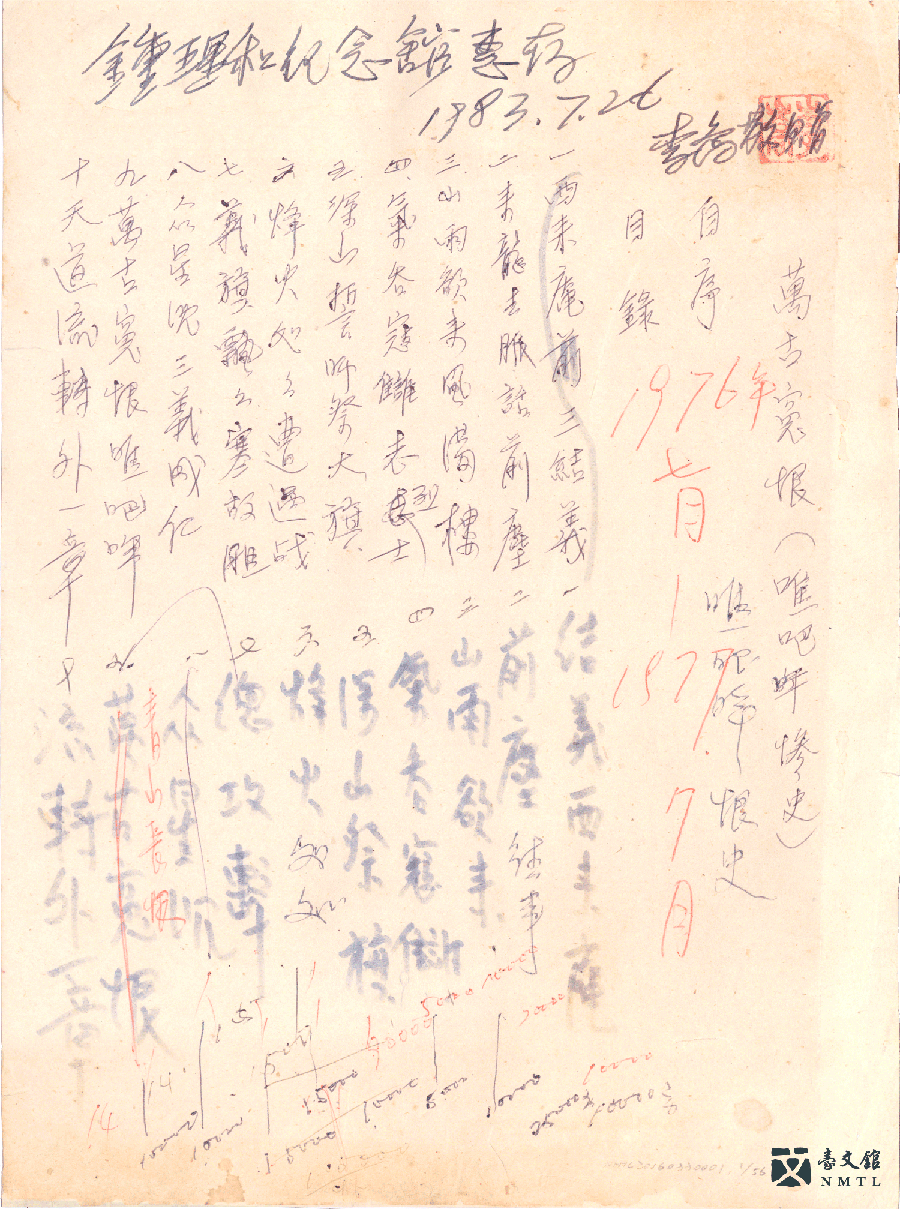
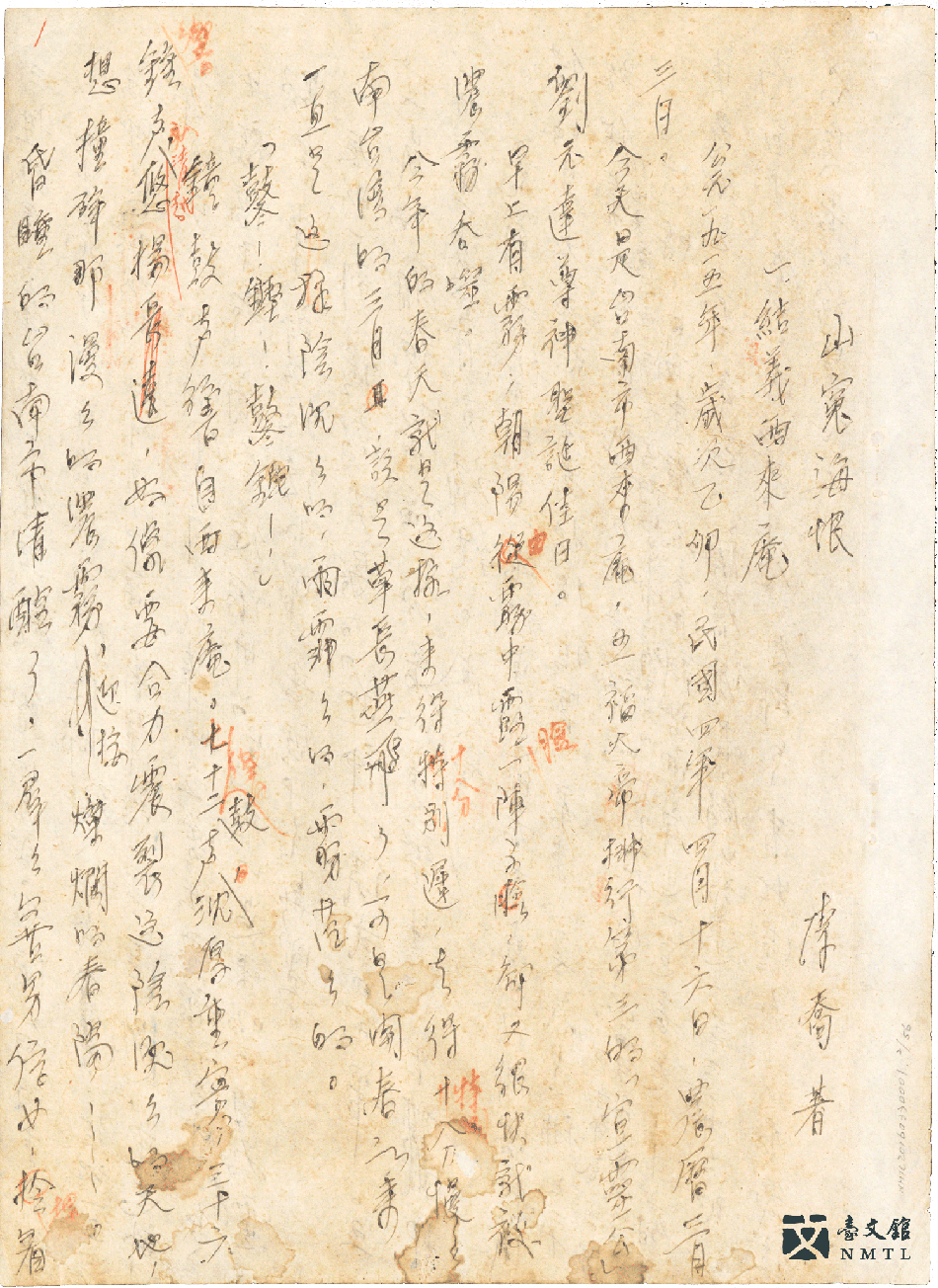
⌛Li Chiao (1934-), "The Oath of Brotherhood in Xilai Temple"|July, 1976 - July, 1977. A fictional story based on the Tapani Incident.(Donated by Chung Li-ho Cultural and Educational Foundation)
◟◠◡◠◡◠◡◠◡◠◡◠◞
⭓ 1921~1934, the formation of the Taiwan Cultural Association, and the petition for the establishment of a parliament for Taiwan
The Taiwan Cultural Association was the most important cultural enlightenment group for the Taiwanese during the Japanese Colonial Era. Established on October 17, 1921, it was led by intellectuals such as Chiang Wei-shui and Lin Hsien-tang. It published newspapers, set up news reading groups, and staged drama shows, cultural lectures and other activities, hoping to inspire the people's civil awareness. At the same time, the Association also advocated in Japan for a "petition movement for the establishment of a parliament for Taiwan" with a political notion, hoping to realize the proposition of " Taiwan for Taiwanese."
Chiang Wei-shui, who had a physician's background, bequeathed the people with remarkable quotes, such as "Compatriots must unite, for in unity there is power (Tông-pau su thoân-kat,thoân-kat chin ū la̍t)." In addition, many classical Chinese poets also participated in the movement, which brought about a variety of commentaries on this enlightenment movement for the people of Taiwan.
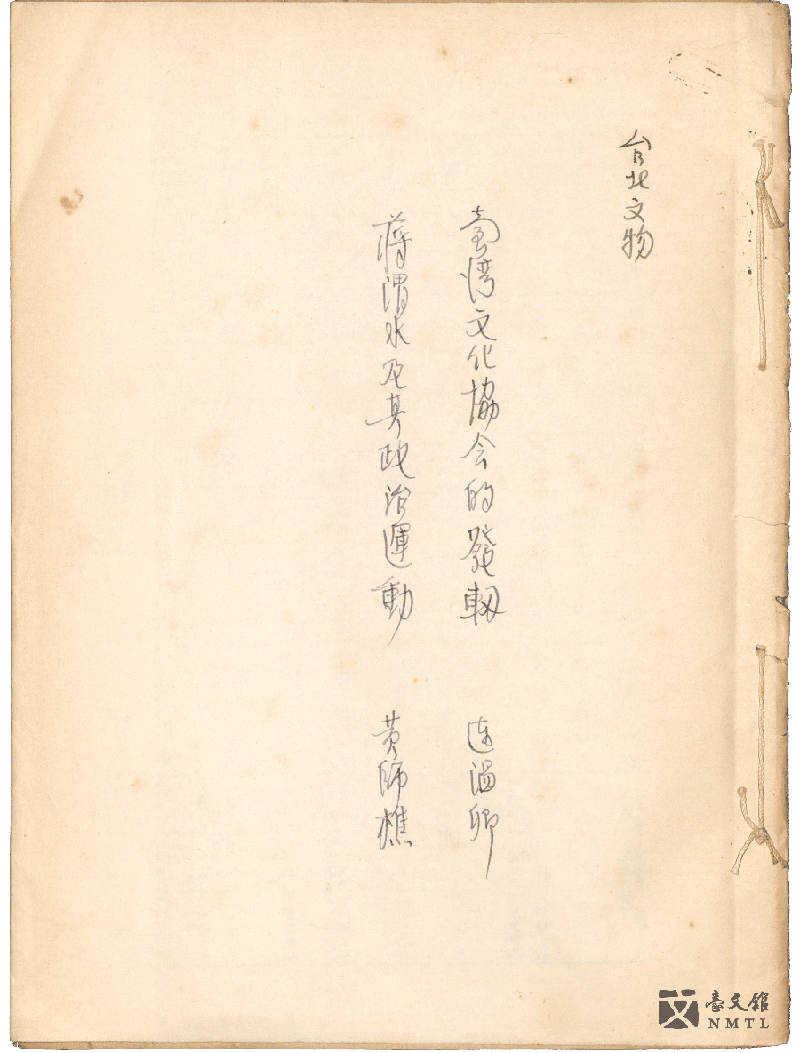
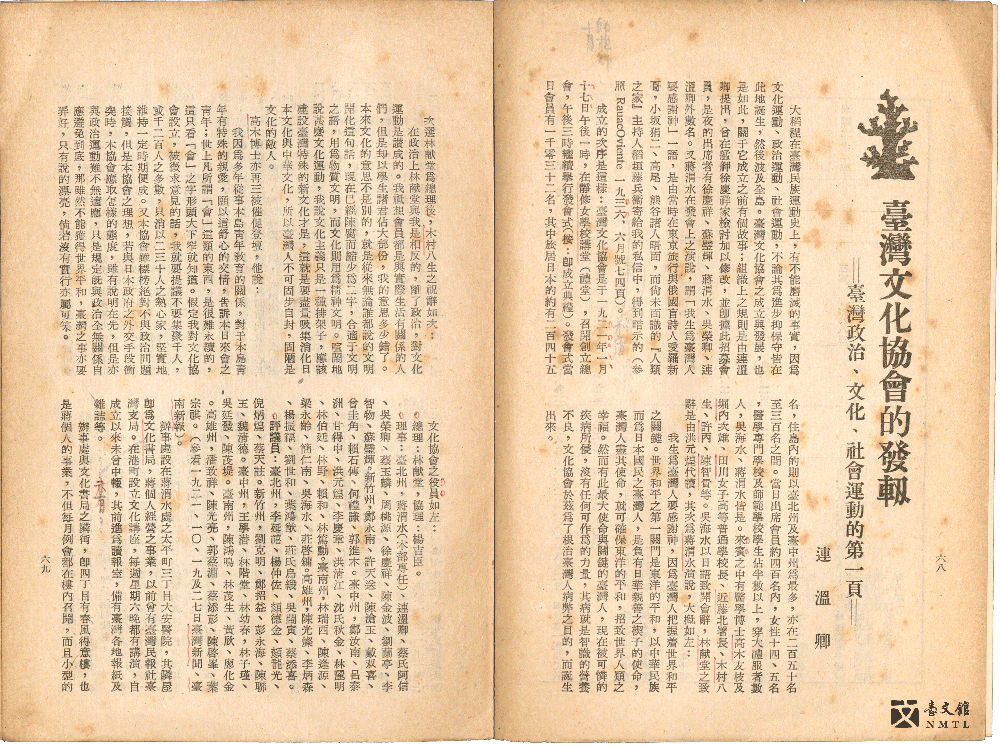
⌛Lien Wen-ching (1894-1957), "The Beginning of The Taiwan Cultural Association," TAIPEI CULTURAL RELICS|This article documents the establishment of the Taiwan Cultural Association, the inaugural meeting and the main points of Chiang Wei-shui's speech, the members of the organization and the operating status, the incidents involving the police under the suppression by the Japanese government, etc.(Donated by Li Po-ju)
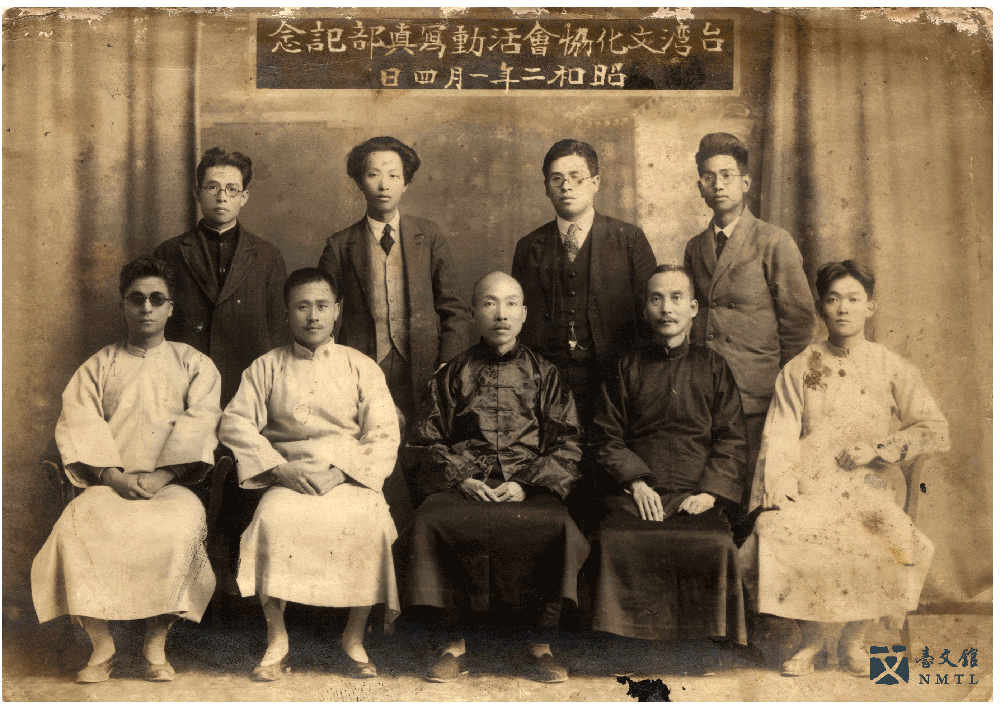
⌛Commemorative Photos of the Department of Film Playing, the Taiwan Cultural Association(Donated by Lin Chang-feng)
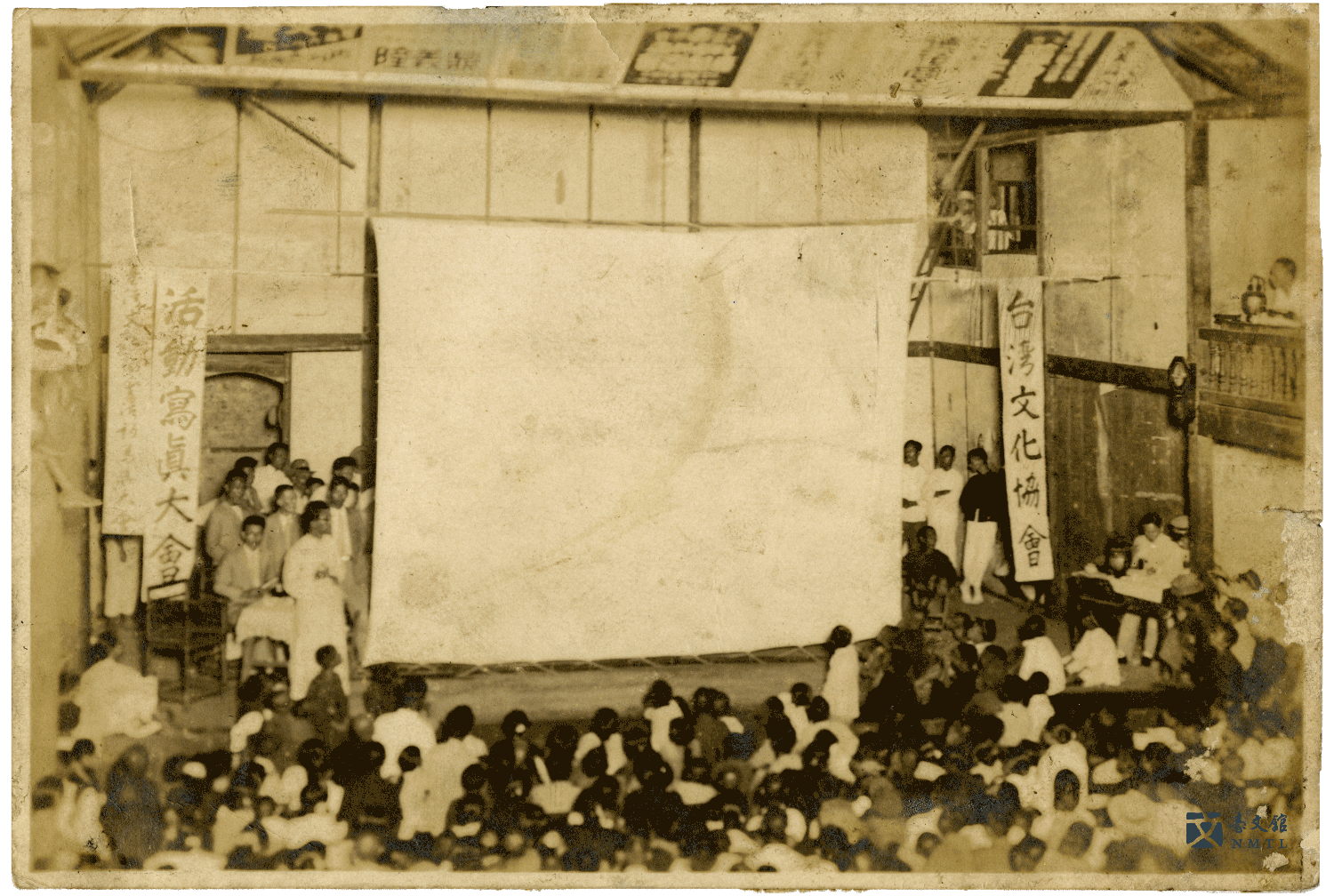
⌛The Film Screenings, the Taiwan Cultural Association(Donated by Lin Chang-feng)
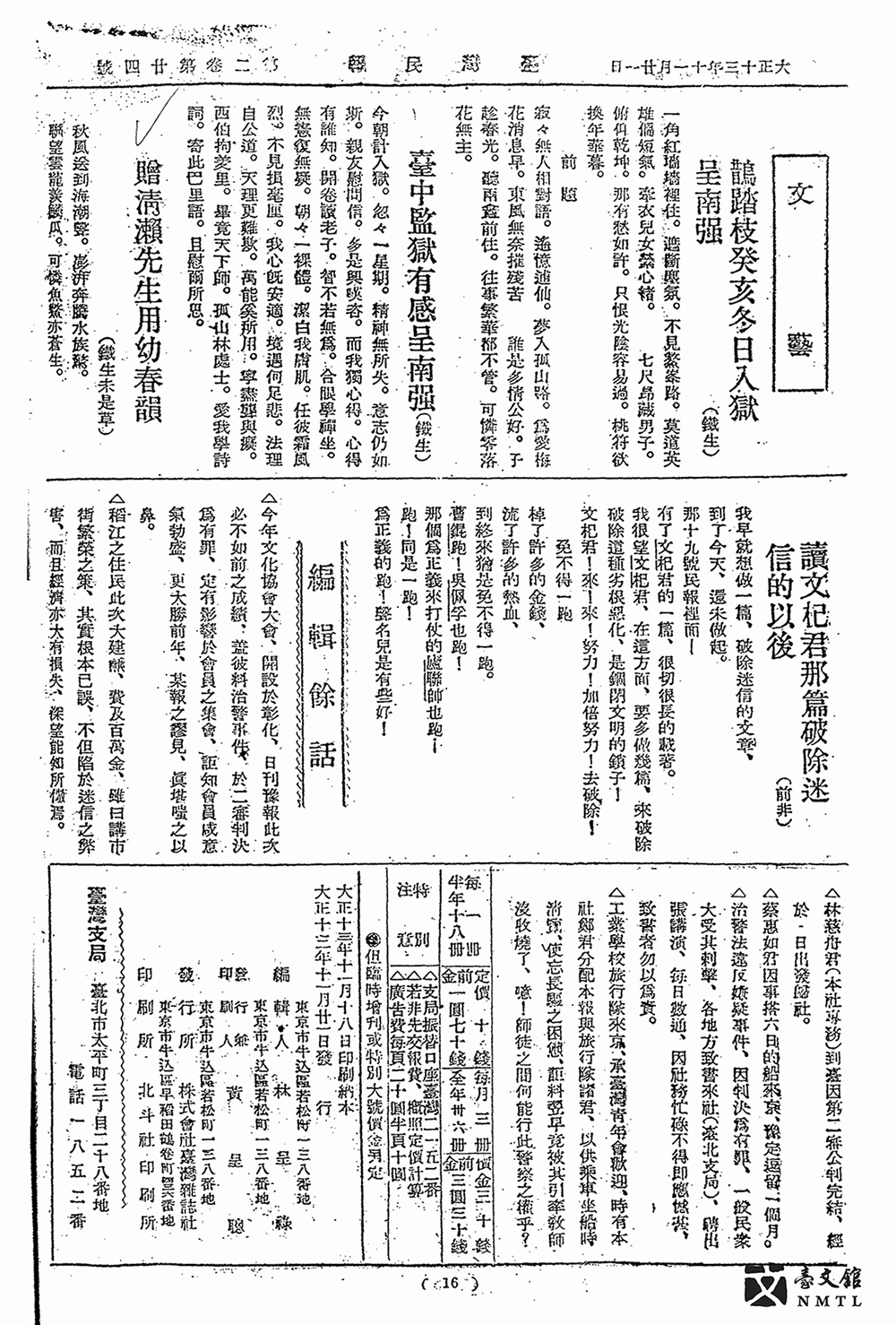
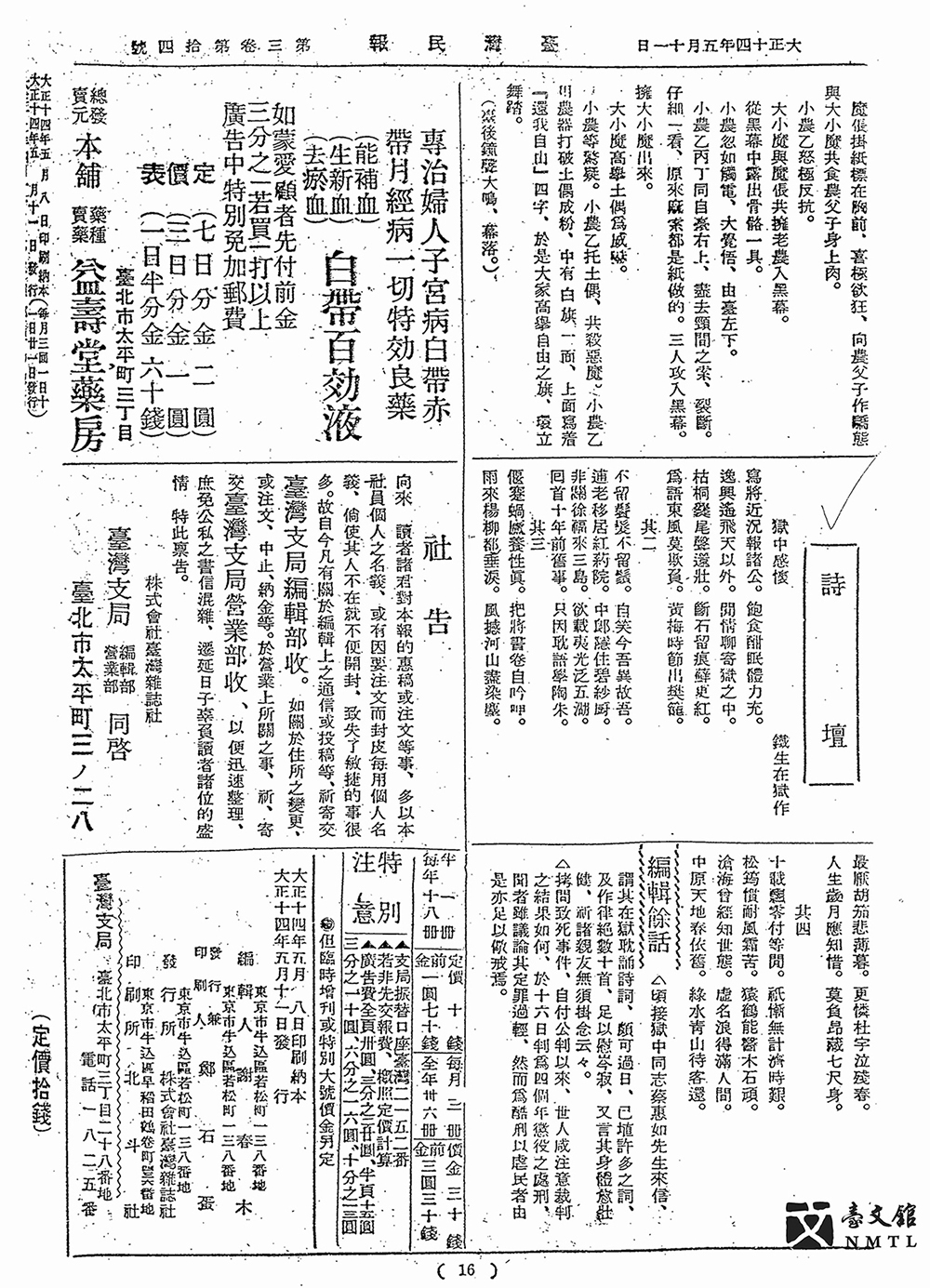
⌛Tsai Hui-ju (1881-1929), "To Nan-chiang, Feelings in The Taichung Prison," "Sentiments in The Prison," Volume 2, No. 24, Vol. 3, No. 14 in THE TAIWAN MINPAO|Tsai joined "Li She" (a poetry society) in 1906 and founded the "Ao Si Yin She" (another poetry society). Tsai was imprisoned due to the "Police Incident" in 1923. This work is a poem to reflect the current trend and situation with sentiment.(Collection of the National Museum of Taiwan Literature)
◟◠◡◠◡◠◡◠◡◠◡◠◞
⭓ 1927, the Establishment of Taiwan People's Party
The Taiwan People's Party was established in 1927. It was created due to a split within the Taiwan Cultural Association, and the departure of Chiang Wei-shui and the old members, with an aspiration towards the "affirmation of people-oriented governing, formation of a sensible economy, and elimination of the shortcomings in the social system" as the party platform. It also advocated the resistance of peasants and the working classes. On February 18, 1931, at the Fourth Party General Meeting, the Japanese police banned the Party, forbad meetings, and so the Taiwan People's Party was dismissed.
In the name of the people, the Taiwan People's Party declared in a protest statement that: "The liberation movement of the Taiwanese cannot be achieved purely by intellectuals and the bourgeoisie; the attainment of freedom for all Taiwanese can only be possible through the joint effort of the laborers, peasants, and the proletariat."
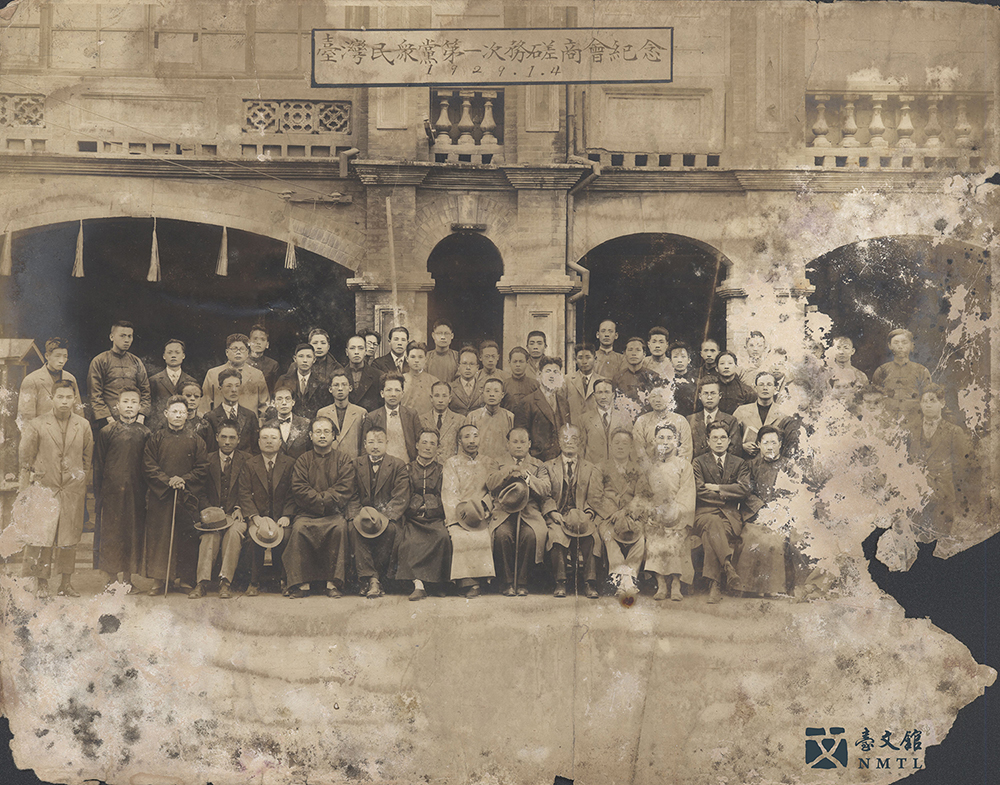
⌛Commemoration of the first Taiwan People's Party consultation meeting(Donated by Lin Chang-feng)
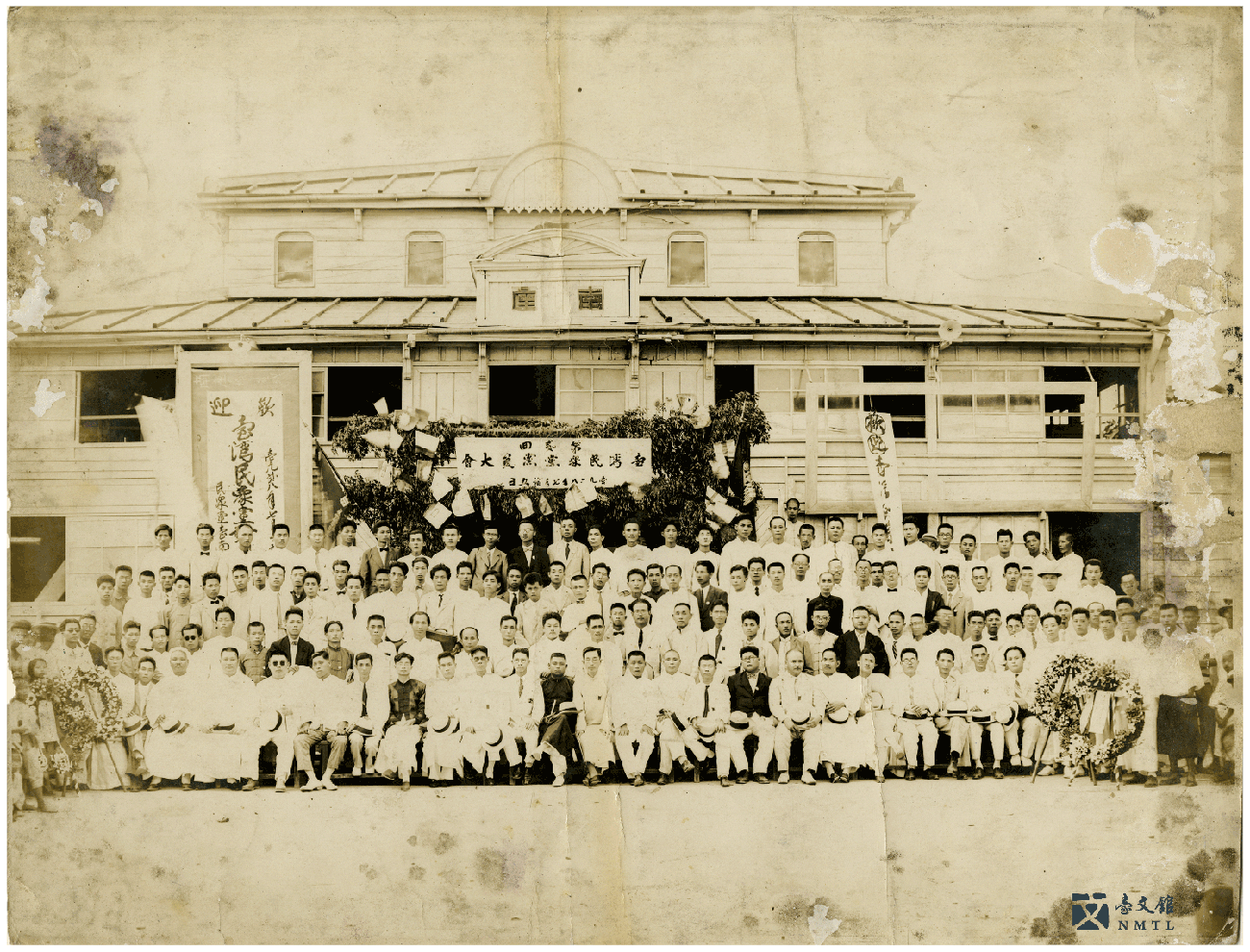
⌛The second general meeting of the Taiwan People's Party(Donated by Lin Chang-feng)
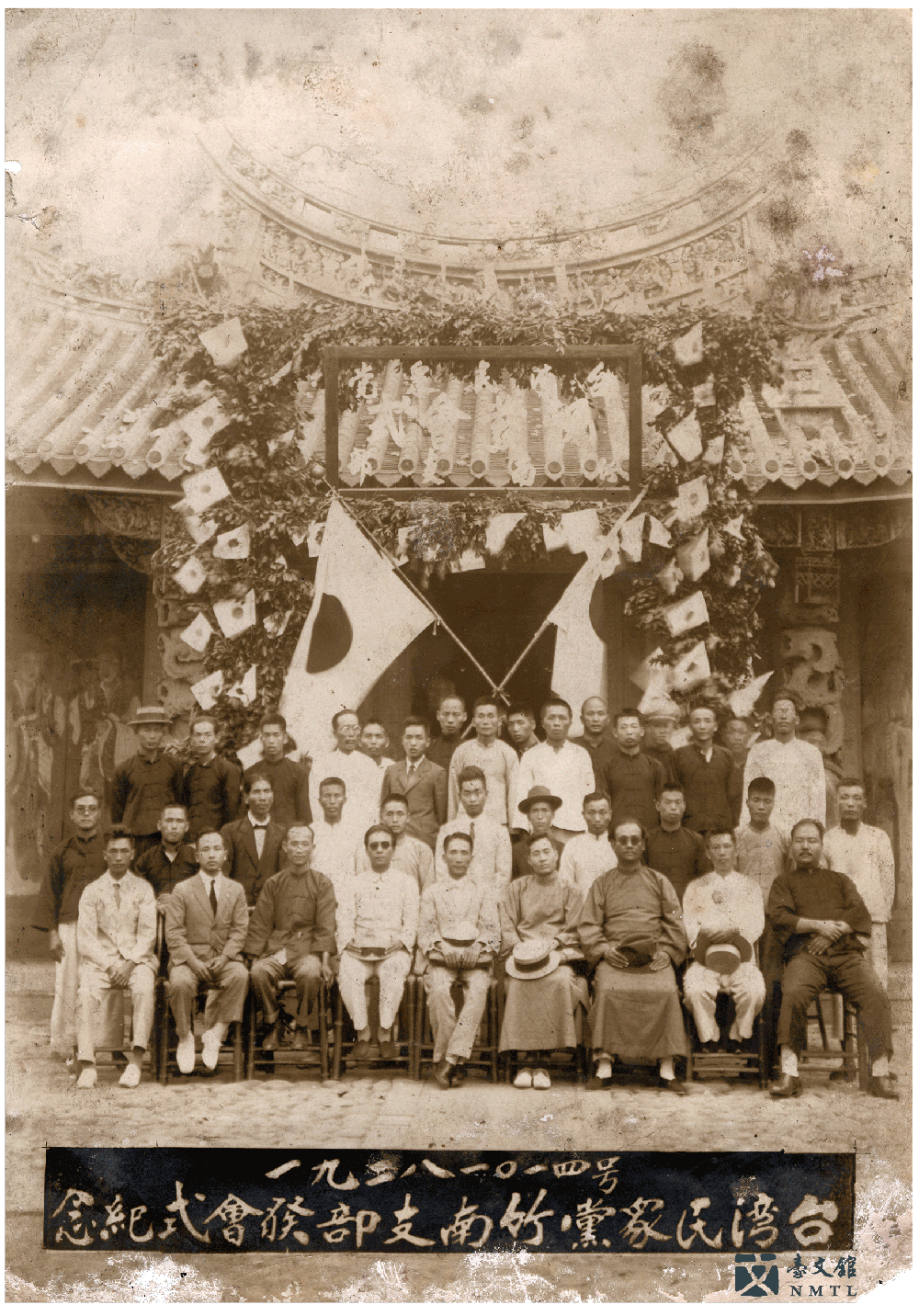
⌛Inaugural ceremony commemoration of the Zhunan Division of the Taiwan People's Party(Donated by Lin Chang-feng)
◟◠◡◠◡◠◡◠◡◠◡◠◞
⭓ 1930, Musha Incident
Since the Japanese came to the ruling, they instigated an "appeasement and conciliation policy" on the indigenous peoples in the mountainous areas, restricting their personal and living freedoms, thereby causing a certain amount of dissatisfaction. On October 27, 1930, Mona Rudao of the Seediq tribe took to the opportunity of the Musha Games, where senior officials of the Governor's Office were present, and mobilized 6 tribes together to retaliate against the Japanese authorities. A large-scale raid was launched, and the Musha area was occupied. After the incident, the Governor-General immediately carried out crackdowns. In addition to ground attacks, aerial machine gun fire and bombing were used to disintegrate the tribal resistance forces in late November.
Contemporary writers researched the Musha Incident in detail. Among these were Teng Hsiang-yang's MUSHA INCIDENT, which vividly describes the reasonable resistance of the oppressed. Another writer, Walis Nokan, wrote in his poem, "Can you not see the cherry blossoms / Their eyes are fiery / Every time they bloom, it is / Looking with intent at a history that is gradually fading out."
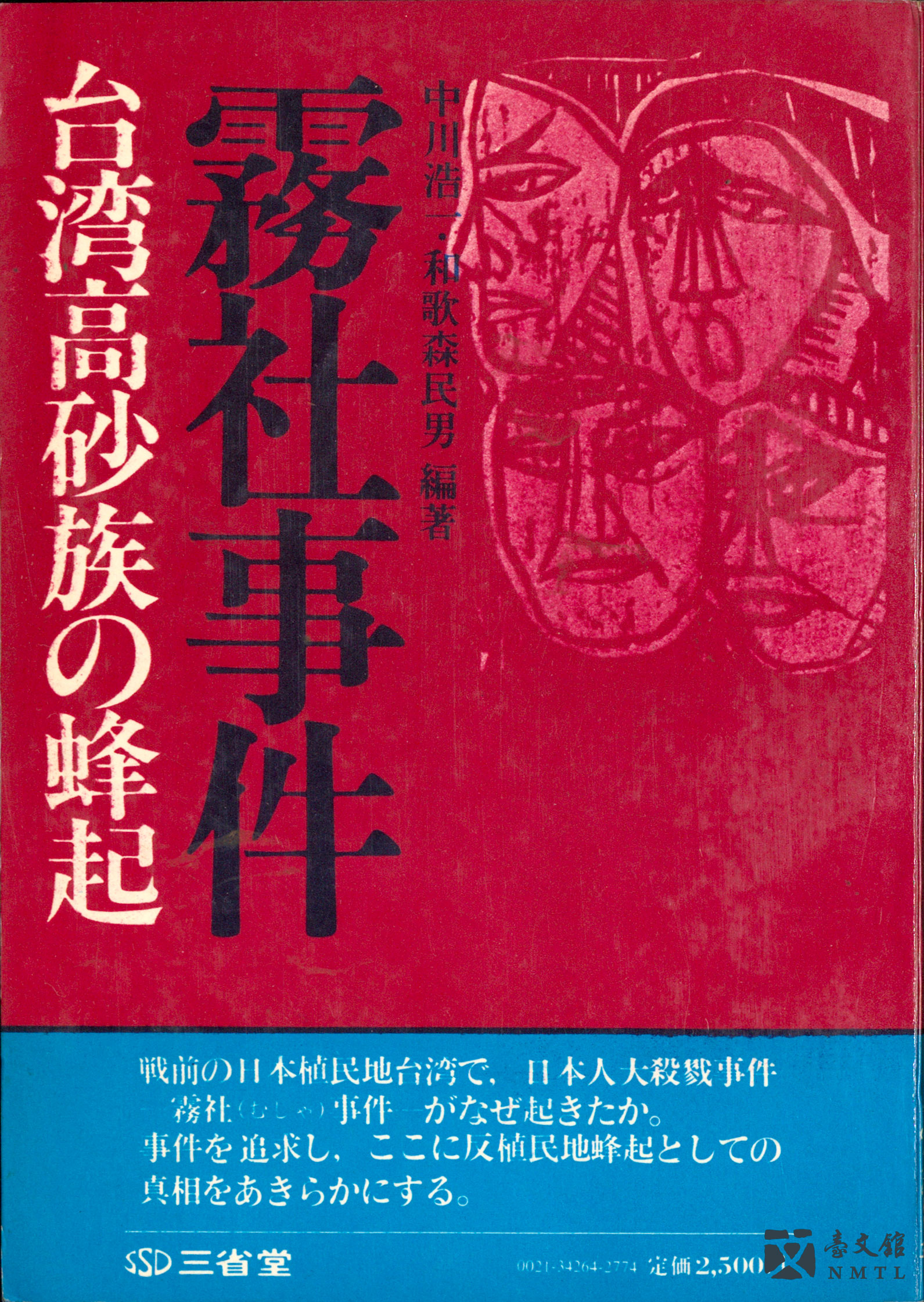
⌛Edited by Koichi Nakagawa and Tamio Wakamori, THE MUSHA INCIDENT IN TAIWAN: THE UPRISING OF THE INDIGENOUS TRIBES|Books Sanseido, Tokyo. The book walks through from the Japanese "appeasement and conciliation" policy on the indigenous peoples to the cause and the development of the Musha Incident.(Donated by Lin Chia-yi)
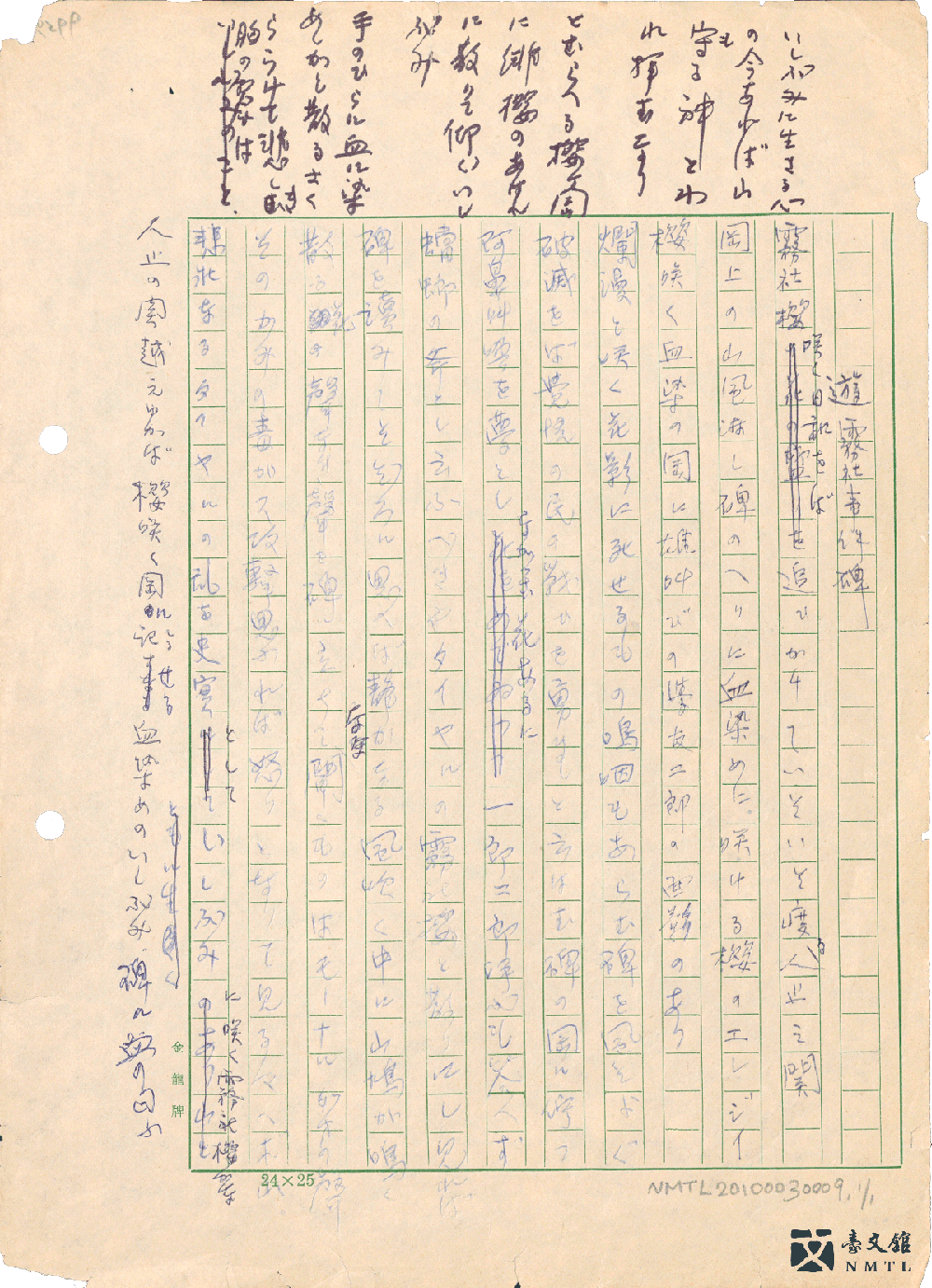
⌛Wu Yung-fu (1913-2008), "Visiting The Monument of The Musha Incident"|There are twelve short songs in this piece of writing. The author recalled the Musha Incident and his childhood classmate Jiro Hanaoka; feeling outraged by the Japanese authorities' poisonous gas attack, he named the incident a "solemn and tragic Atayal rebellion." The last part mentions the full blooming of cherry blossoms above the monument which records the Musha Incident.(Donated by Taipei City's Wu Yung-fu Cultural and Educational Foundation)
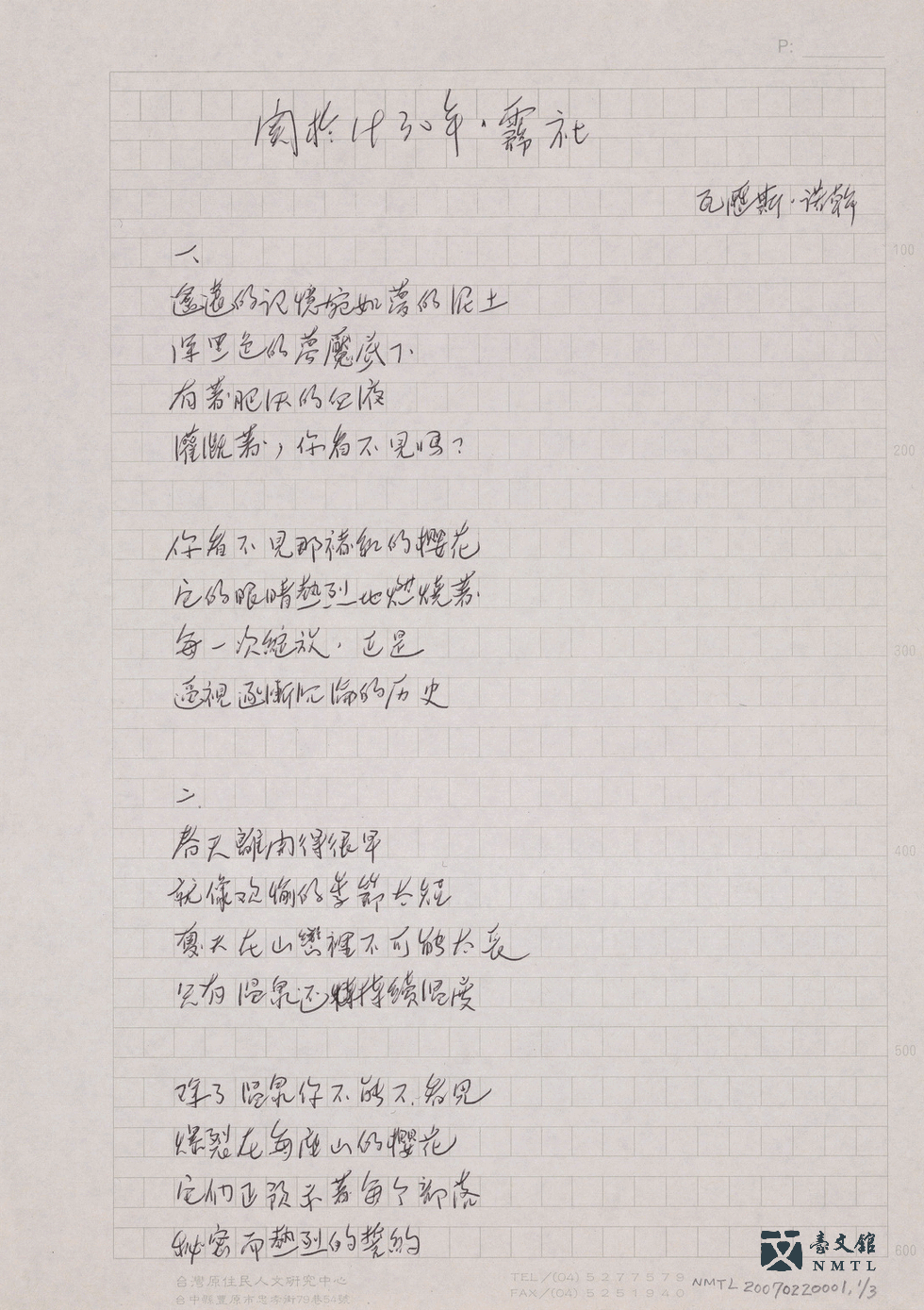
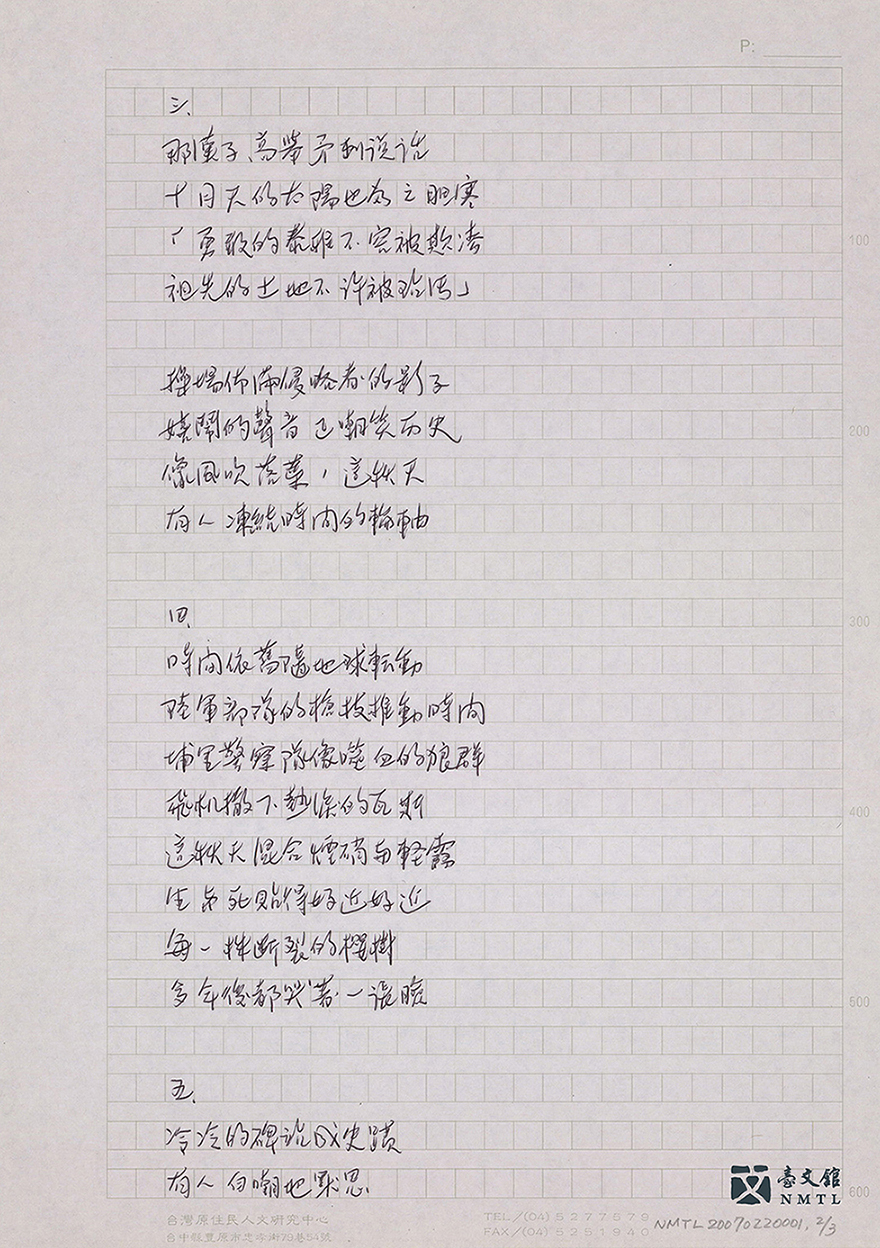
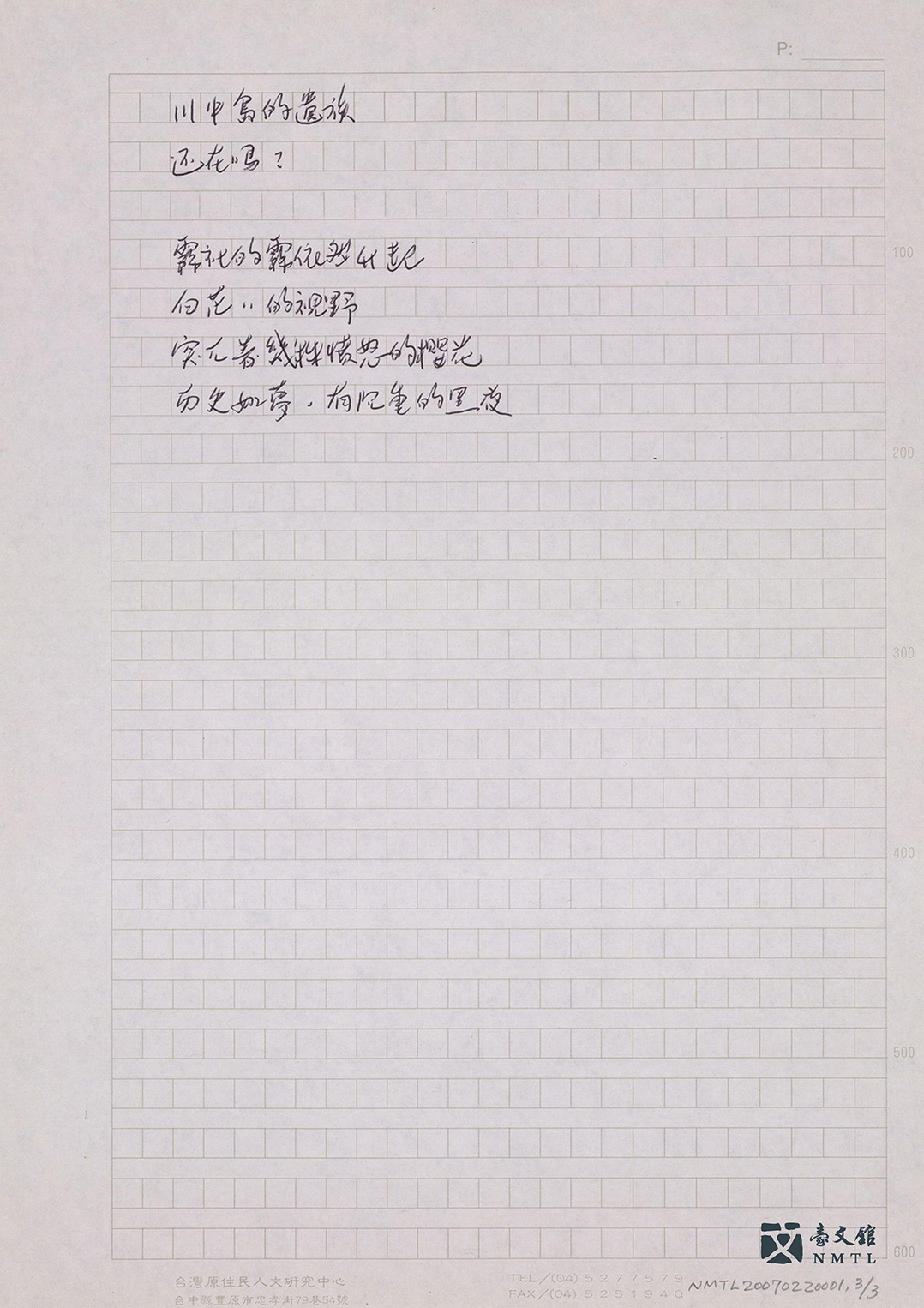
⌛Walis Nokan (1961-), "About Musha in 1930"|This is the work of Atayal writer Walis Nokan. Nokan wrote about the Musha Incident in 1930 in Chinese, a manuscript in the form of modern poetry. The poem is divided into five verse paragraphs, using cherry blossoms as the main imagery throughout the poem. The cherry blossoms in the first verse paragraph allude to the Japanese spirit, indicating that the cherry blossoms could bloom due to nourishment from the bloodshed in the Musha Incident, making the flowering ironically unbearable during the Japanese Colonial Era. The second paragraph points out that the cherry blossoms are not just a symbol of Japan; as they bloom among the mountains, they also symbolize the many different cultures existing in the mountains. The third paragraph describes the Musha Incident from the beginning of the sports day in the Musha Public School. The fourth paragraph presents the Japanese army counter-attacking strongly, using poisonous gases; a broken portion of the cherry tree is used to write about the participants of the Incident hanging themselves in the mountains. The fifth verse paragraph is a reflection on history in the format of the cold stone monument, claiming that the memories and lessons learned from history will only bloom like cherry blossoms when we dream of the past occasionally.(Donated by Wu Chun-chieh)
◟◠◡◠◡◠◡◠◡◠◡◠◞
⭓ 1935, Central Taiwan Earthquake
At 6:02:16 a.m. on April 21, 1935, a 7.1 magnitude earthquake struck Taiwan. The epicenter was located in the middle reaches of the Da'an River. Officially called the "Hsinchu-Taichung Earthquake," it was commonly known as the "Central Taiwan Earthquake," "Tuntzuchiao Earthquake" or the "Kuantaoshan Earthquake." The earthquake caused 3,276 deaths and 12,053 injuries; 17,907 houses were completely ruined, and 36,781 houses were partially destroyed. It was the deadliest natural disaster in the history of Taiwan.
There are many legends, folk rhymes and songs among the Taiwanese community that tell of the happenings and express the feelings aroused by the earthquake, which left many appalled.
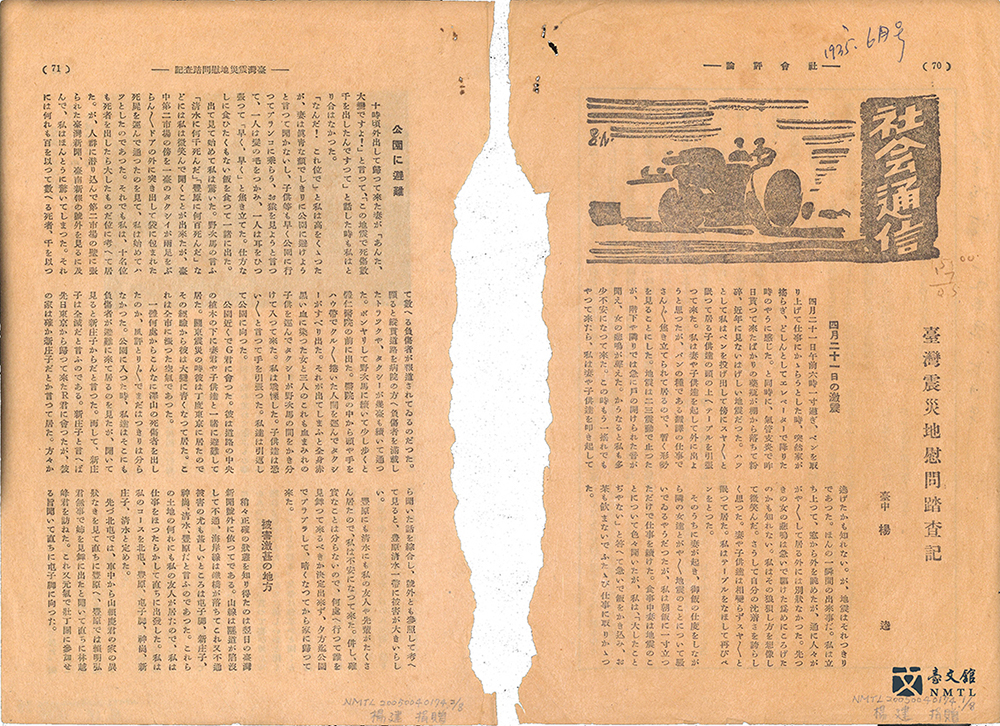
⌛Yang Kuei (1906-1985), "Interview Record about The Earthquake Disaster Relief Work in Taiwan"|Yang Kuei (1906-1985), a writer from Tainan, published this article in the SOCIAL REVIEW in June 1935. He recorded the disastrous situation in various places after the earthquake in detail in the Japanese language. He supplemented the writing with the photo "Utter Destruction of Tuntzuchiao" as a witness to the state of the catastrophe.(Donated by Yang Chien)
◟◠◡◠◡◠◡◠◡◠◡◠◞
⭓ 1941, the Kōminka Movement
In 1937, Japan waged wars in the East Asia region. In the colonies they control, the Japanese forced the people to become imperial subjects, and thus entered the Kōminka movement (Japanization). Then Governor-general of Taiwan, Kobayashi Seizo, announced the three principles of the new governance: "the Kōminka movement, industrialization, and making Taiwan a base for southward expansion." In April 1941, the Kominhokokai (the Public Service Association of Imperial Subjects) was established to launch the Kōminka Movement; the aim was to drive Taiwanese loyalty to the Japanese Imperial Empire. Several Taiwanese writers, such as Chou Chin-po and Chen Huo-chuan, wrote about the Taiwanese experience of Japanization, and delved into the psychological complex of the Taiwanese people. However, they were being criticized at the time for being "utterly Kōminka" in their works.
It was only until years later, when literary historian Yeh Shih-tao wrote, "There was no Kōminka literature, only protest literature." Chung Chao-cheng also felt grievance overliterary creatives in a controversial era.
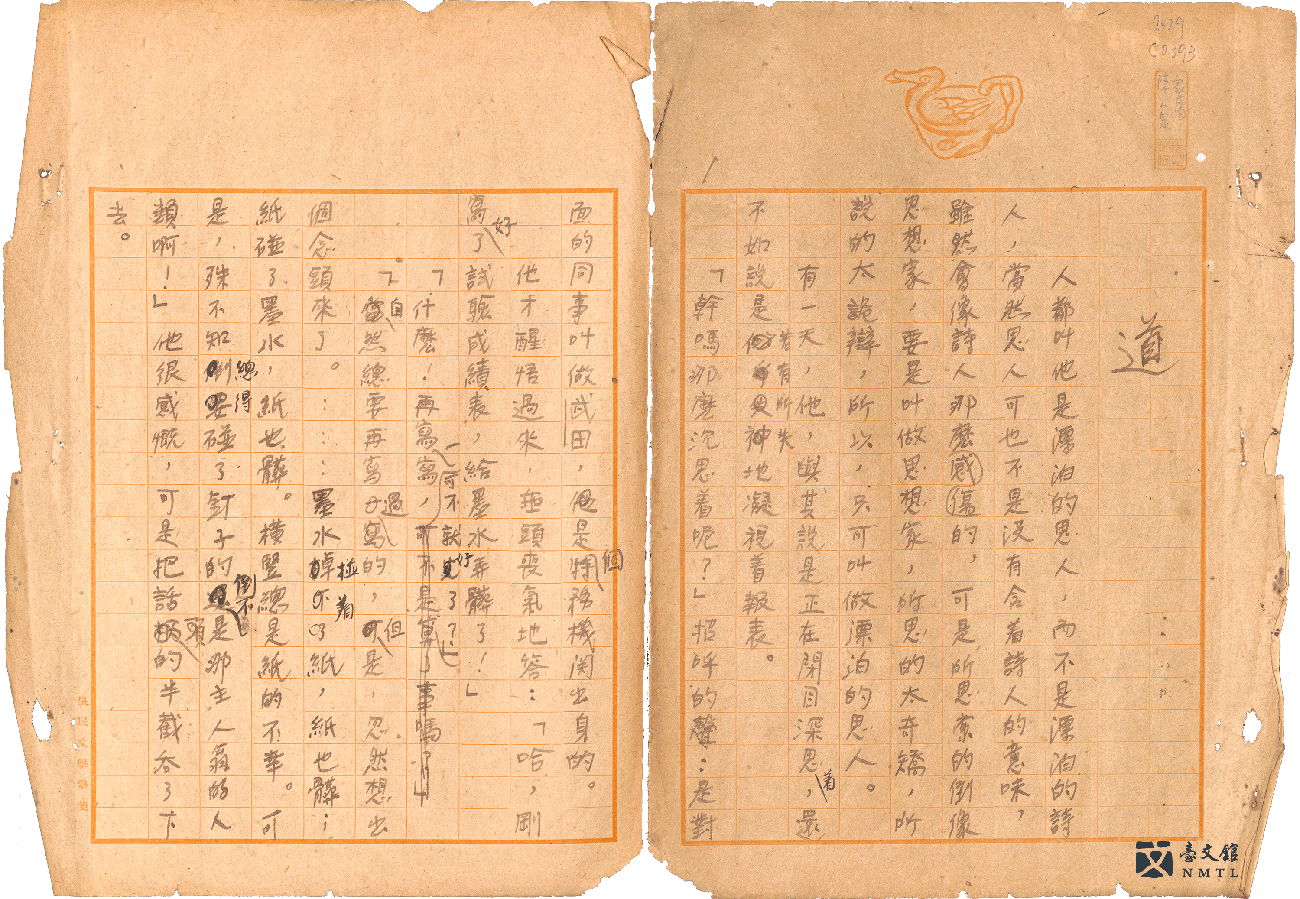
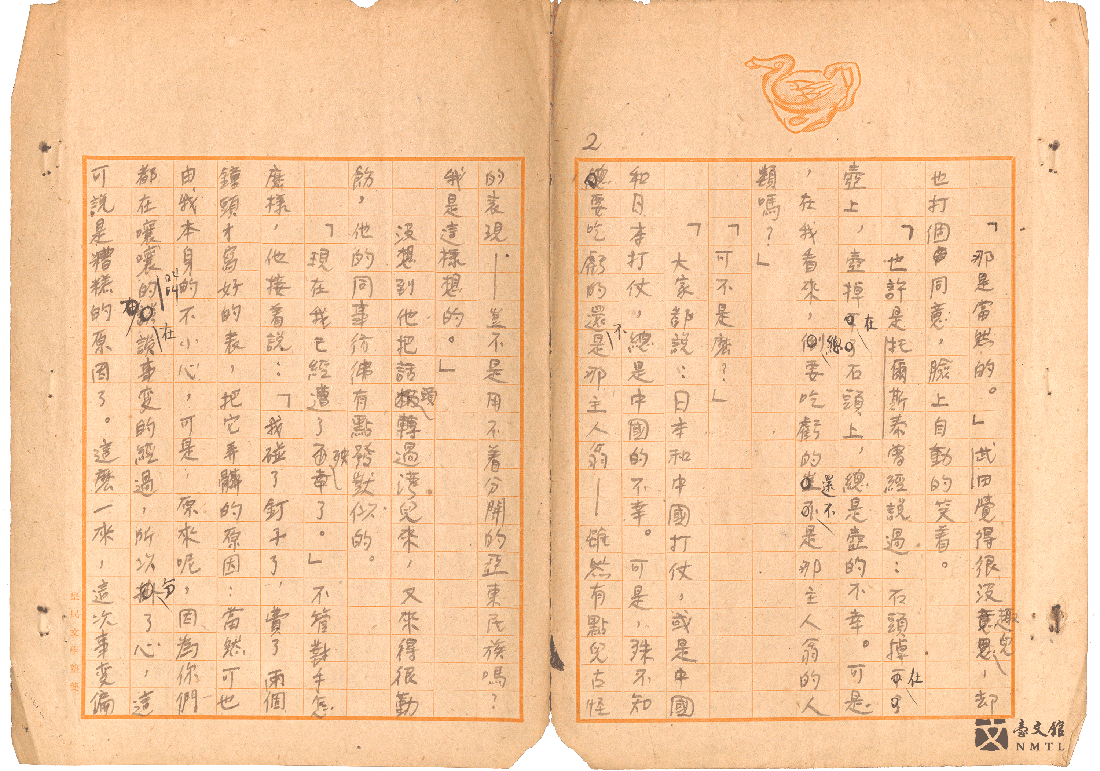
⌛Chen Huo-chuan (1908-1999), "The Way of…"|The original work was published in No. 3, Vol. 6 of TAIWAN LITERATURE AND ART in July 1943. It tells about the story of Ching Nan, a young Taiwanese man who worked in the camphor division of the Monopoly Bureau. He pondered over how he could change himself from Taiwanese into "genuine Japanese."(Donated by the family of Chen Huo-chuan)
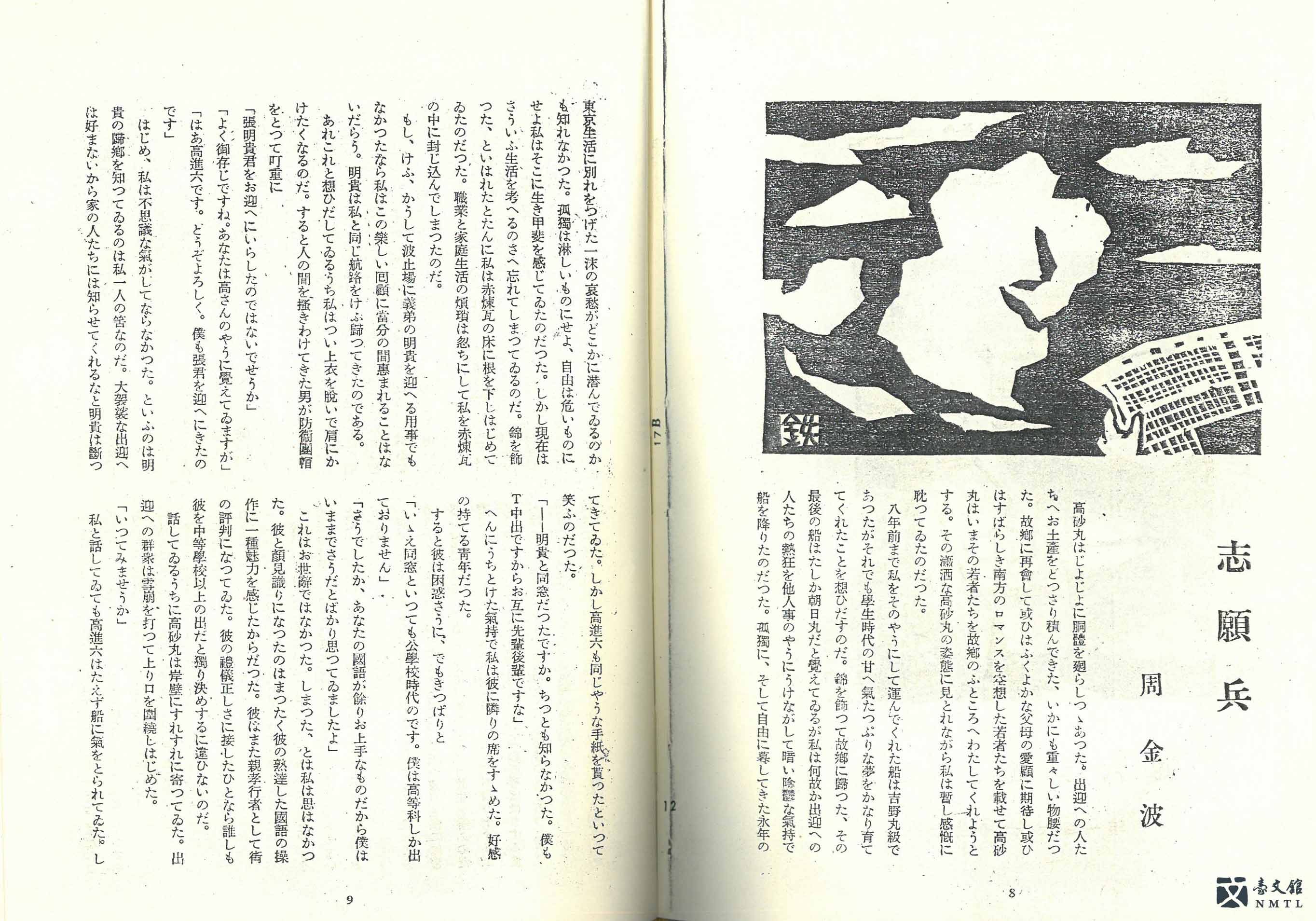
⌛Chou Chin-po (1920-1996), "Volunteer Army," a reprint of Volume 2, Issue 6 of BUNGEI TAIWAN|Chou Chin-po, a novelist, completed most of his studies in Japan. In 1941, he published a novel "Volunteer Army" and won the first Japanese award for Literature and Art from Taiwan.(Collection of the National Museum of Taiwan Literature)

